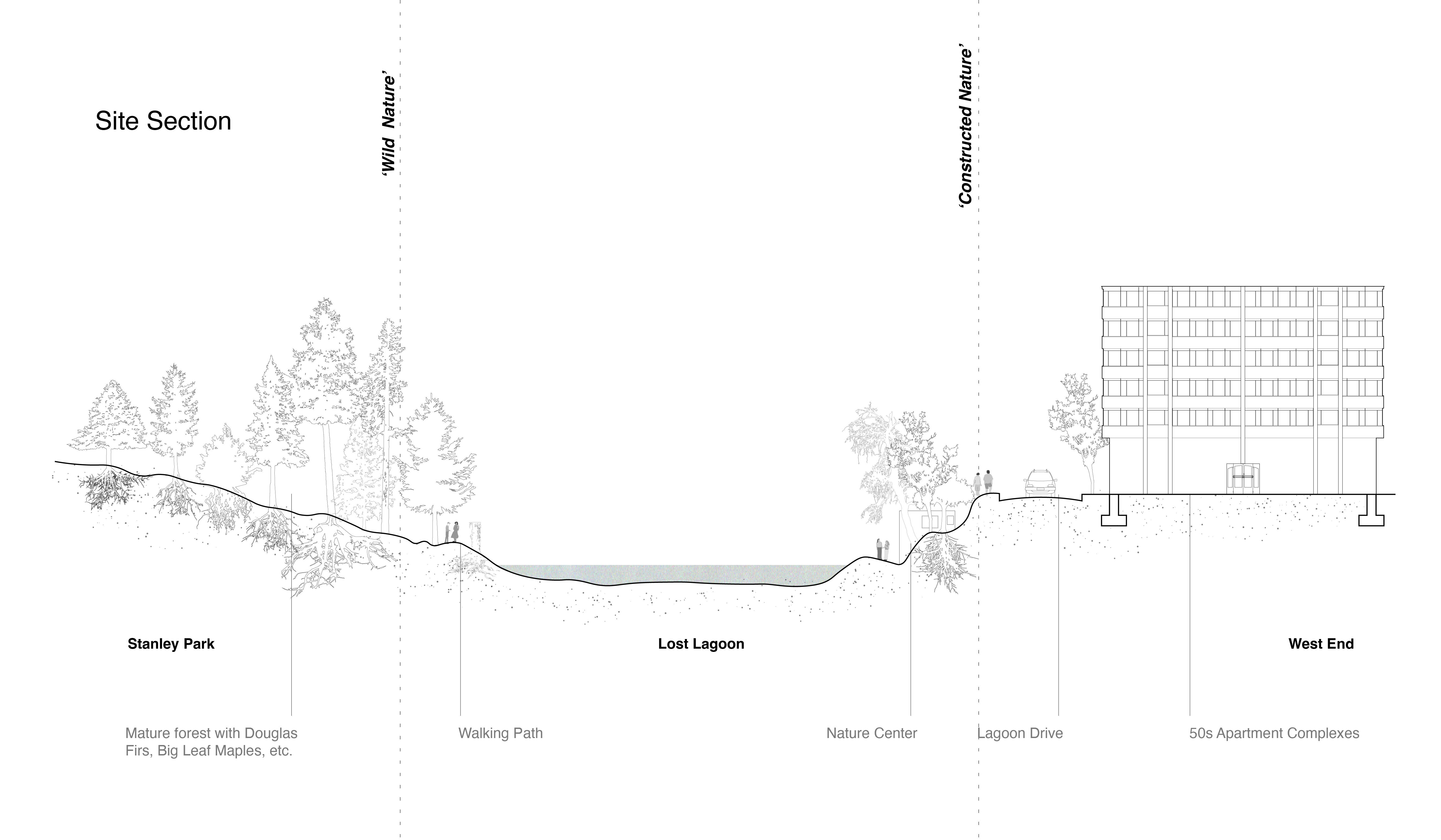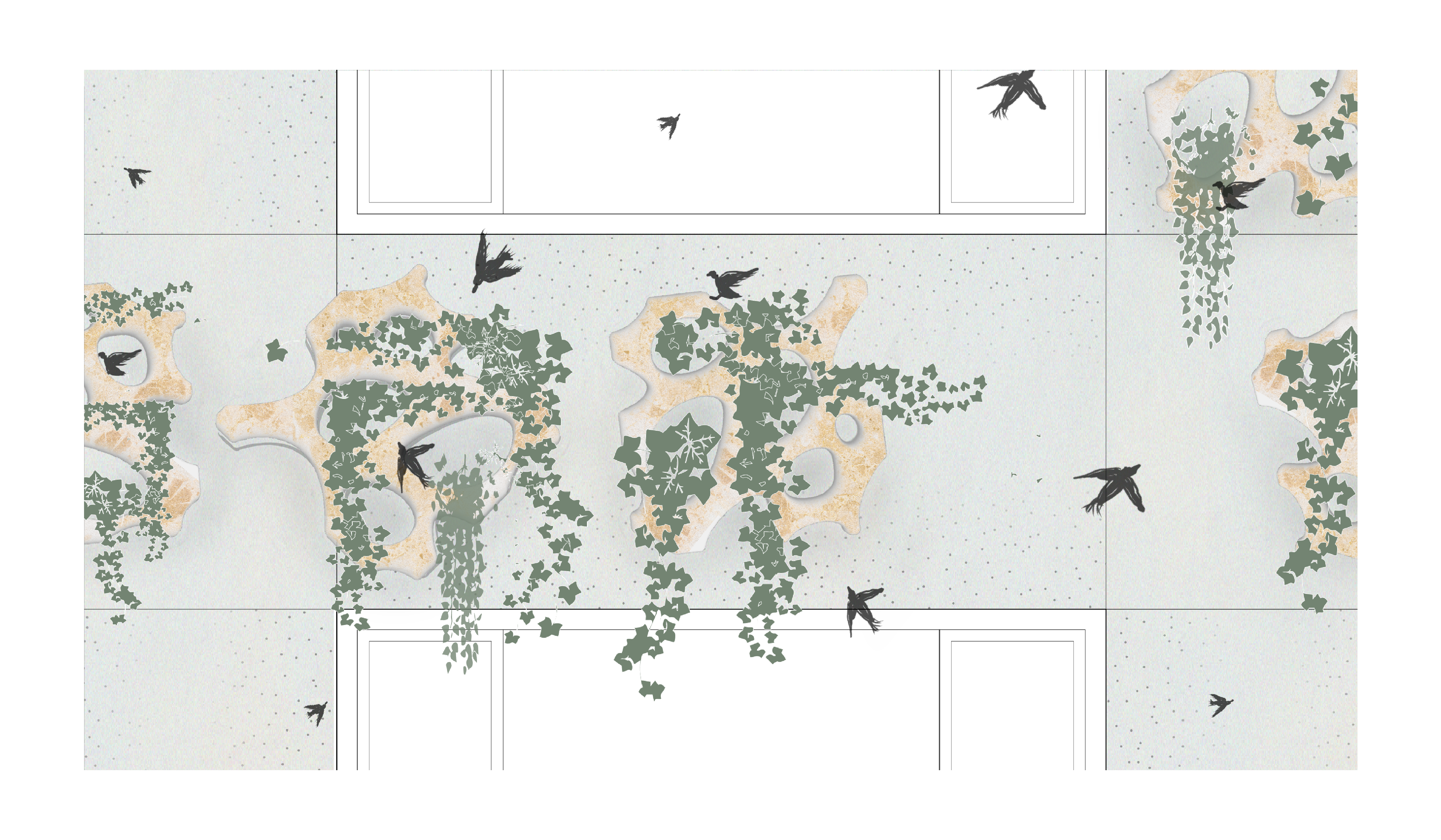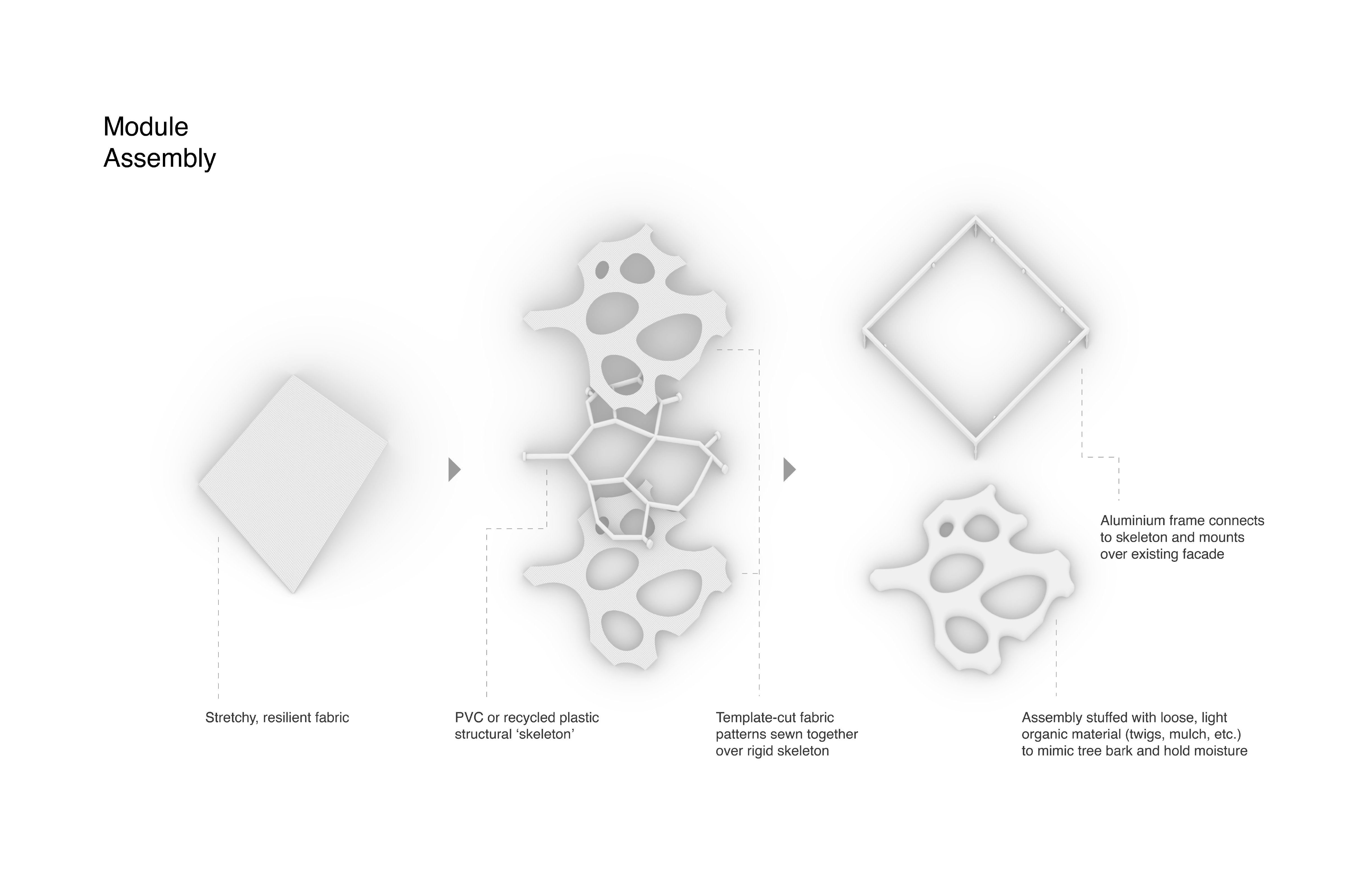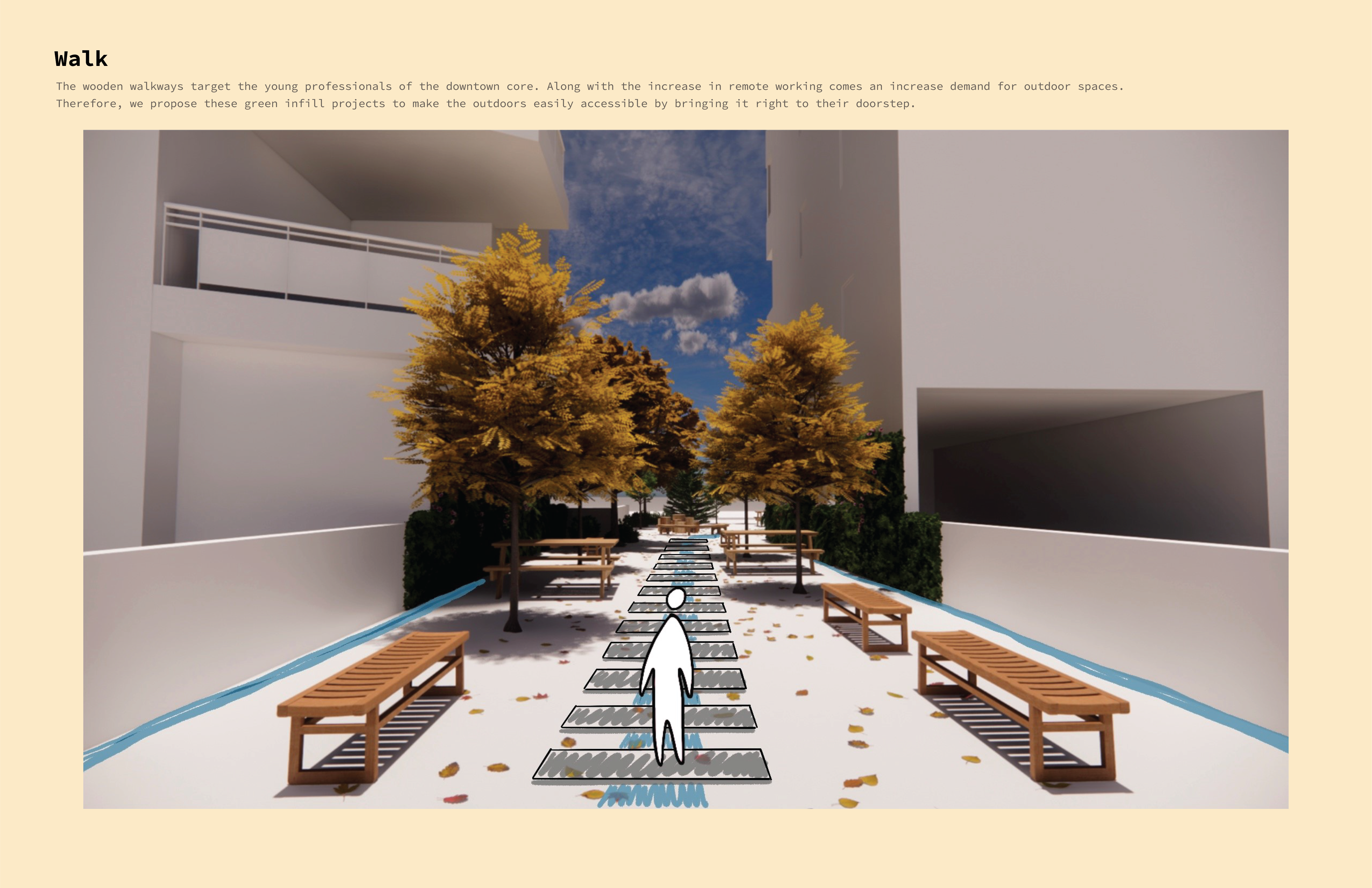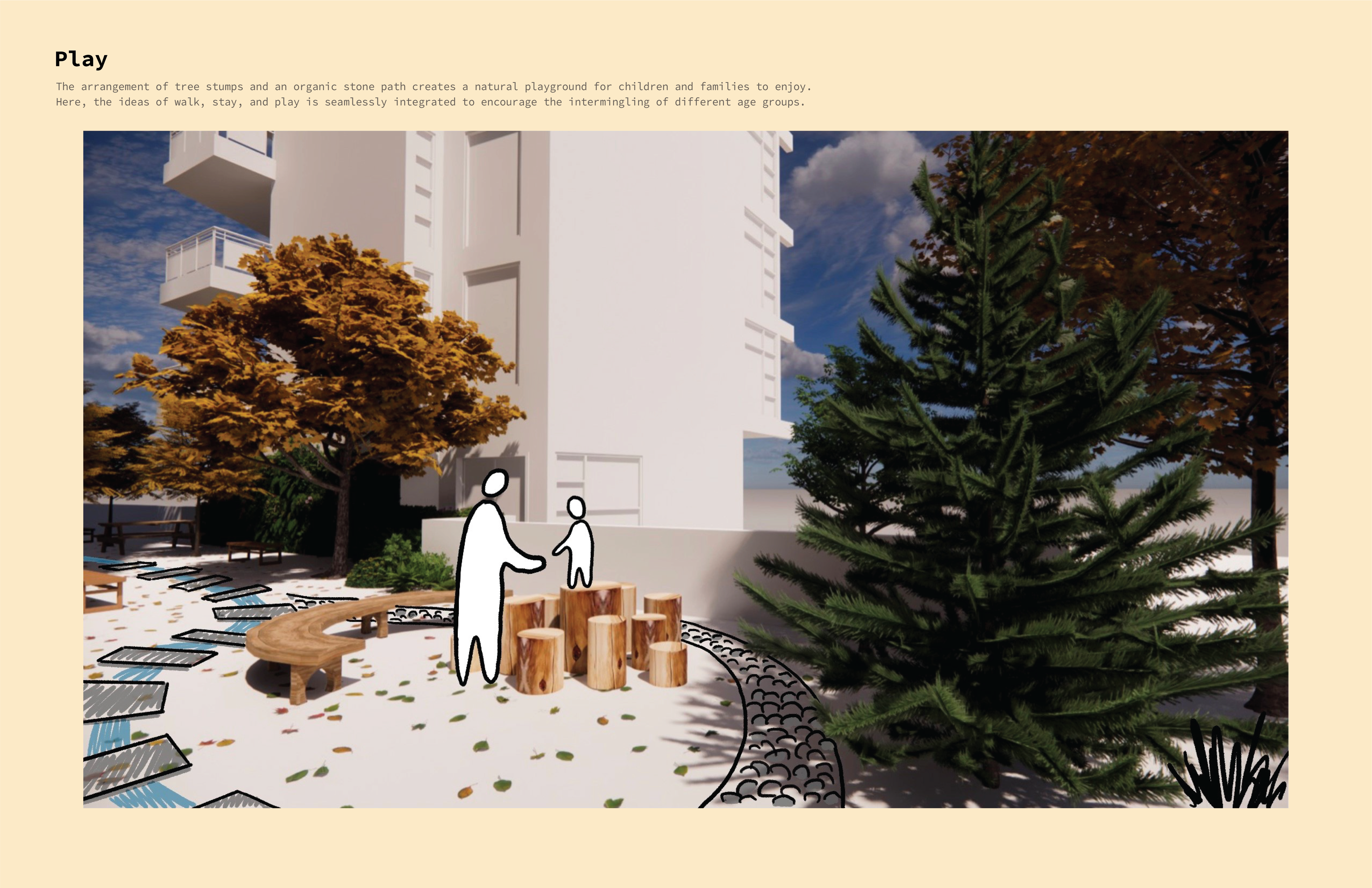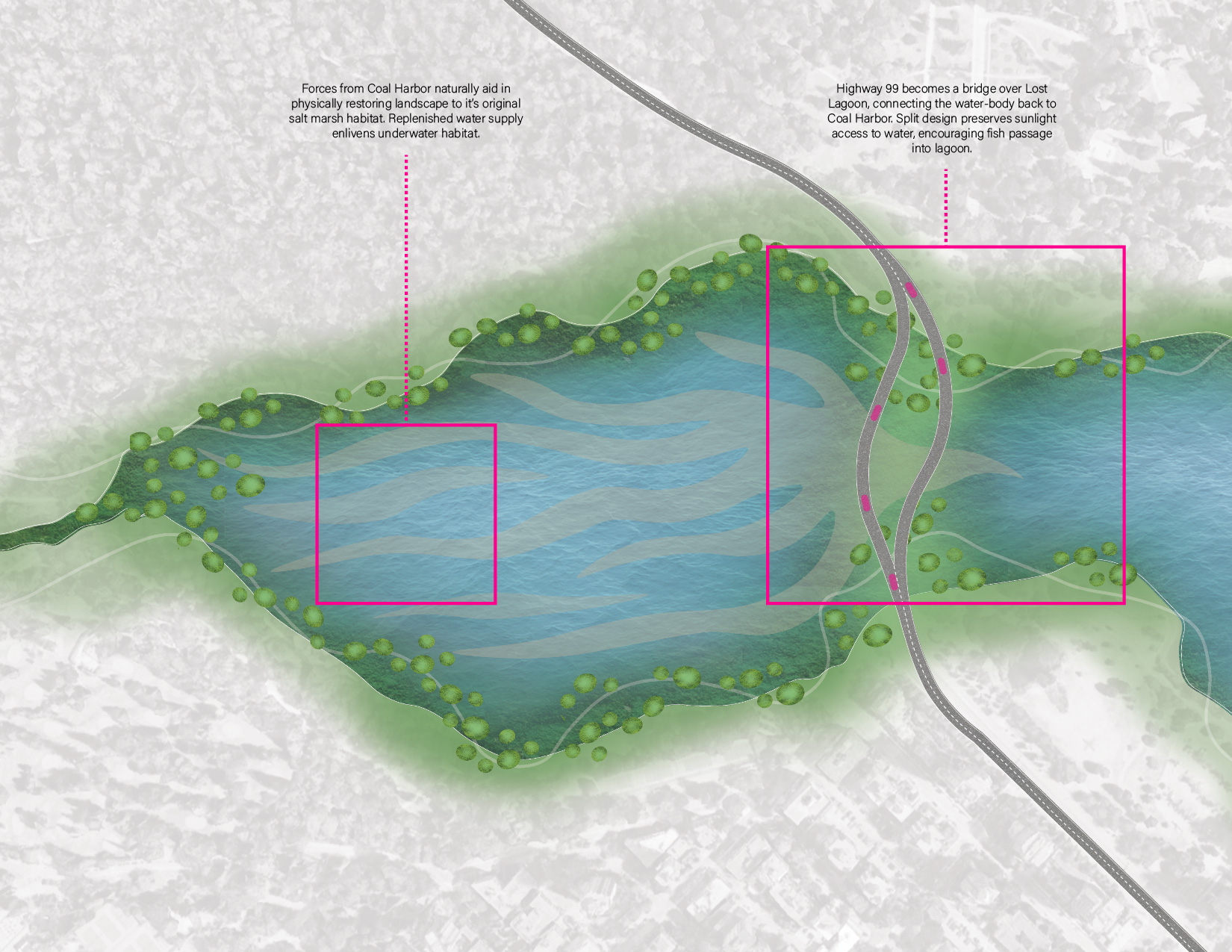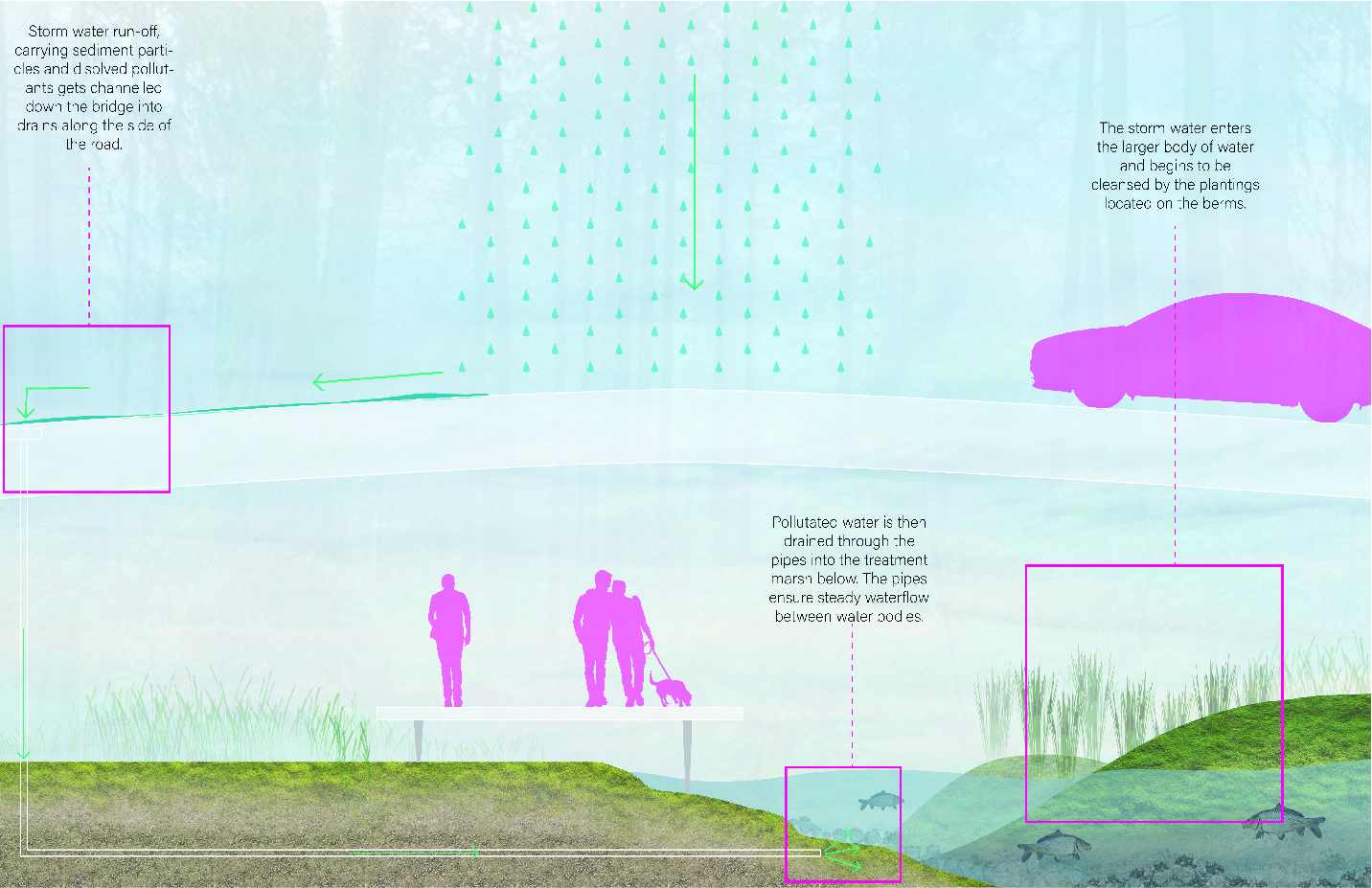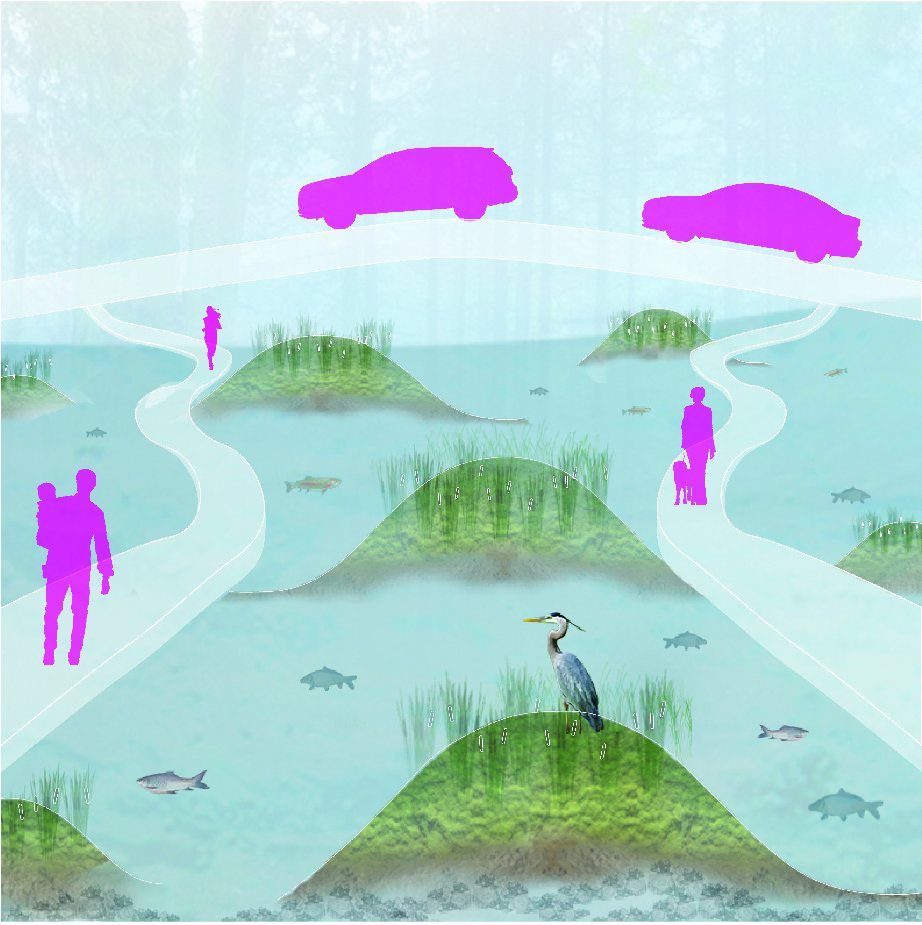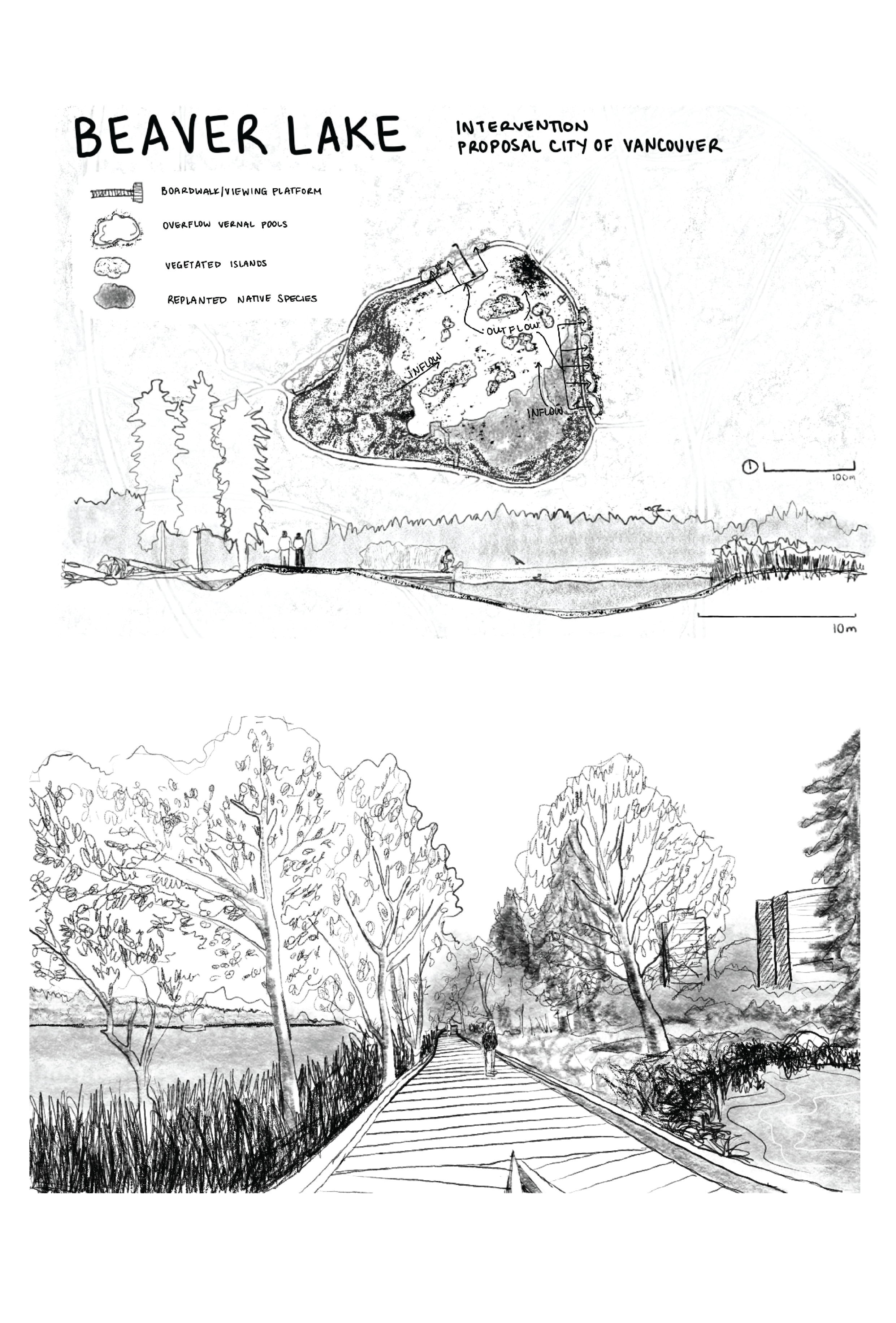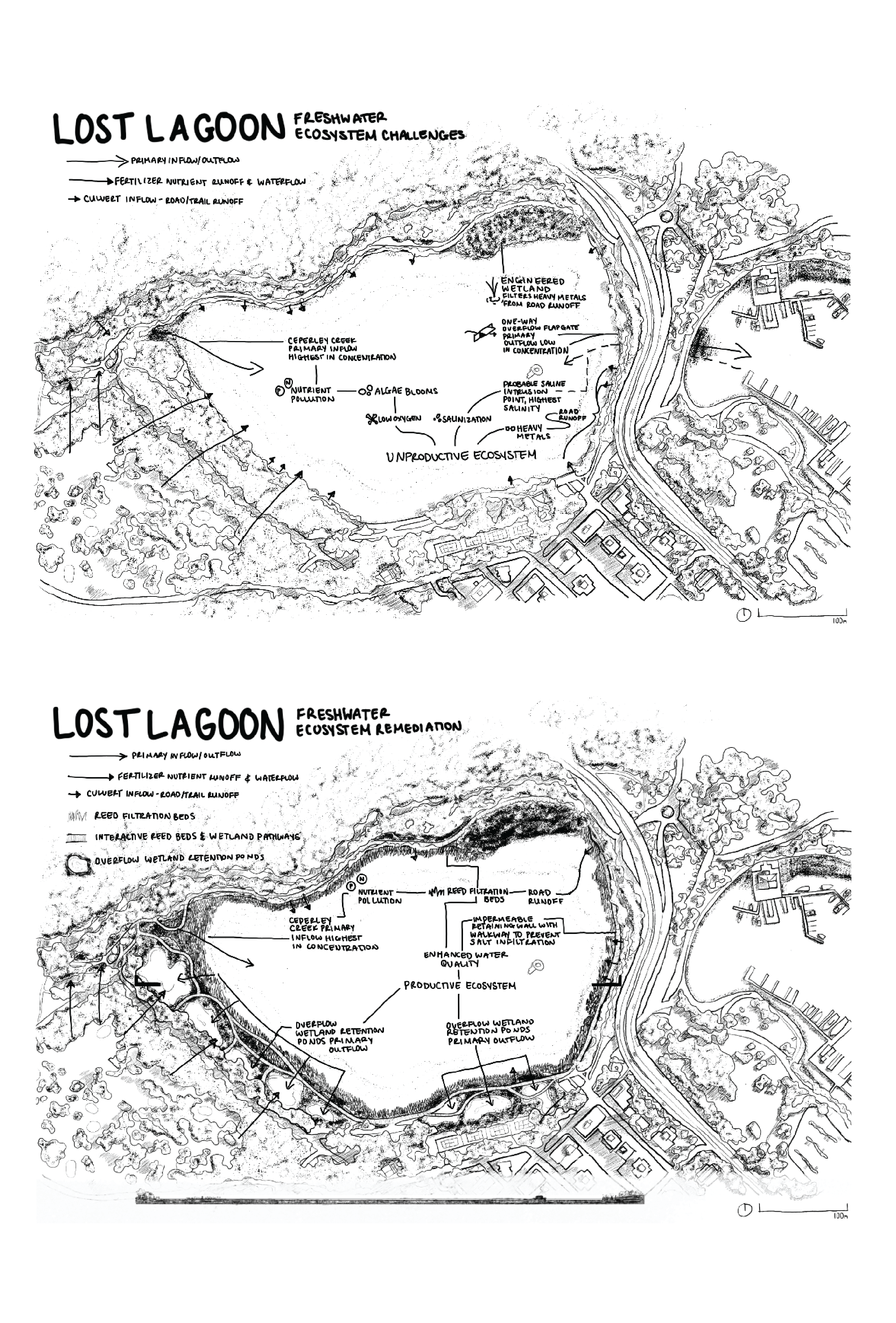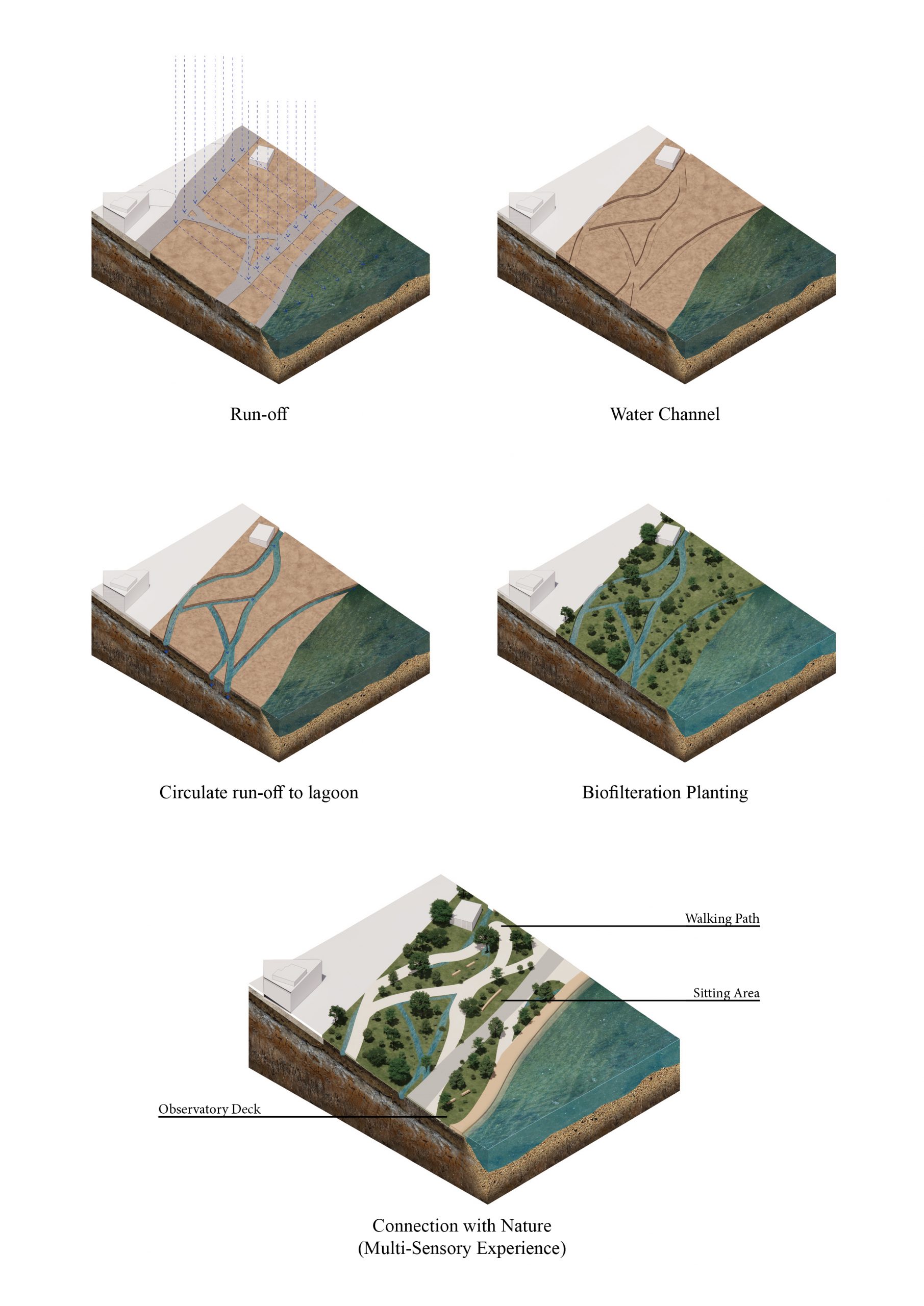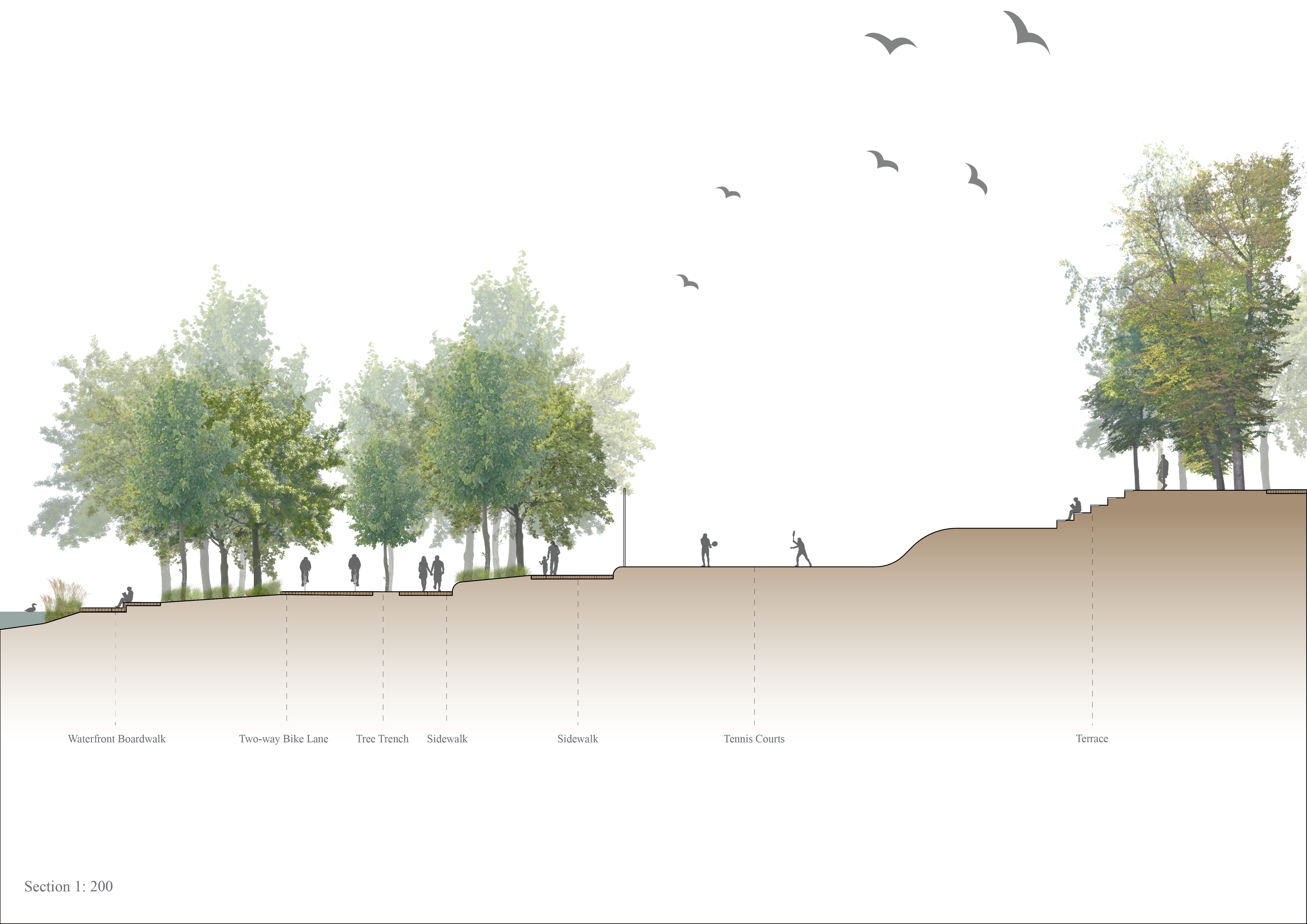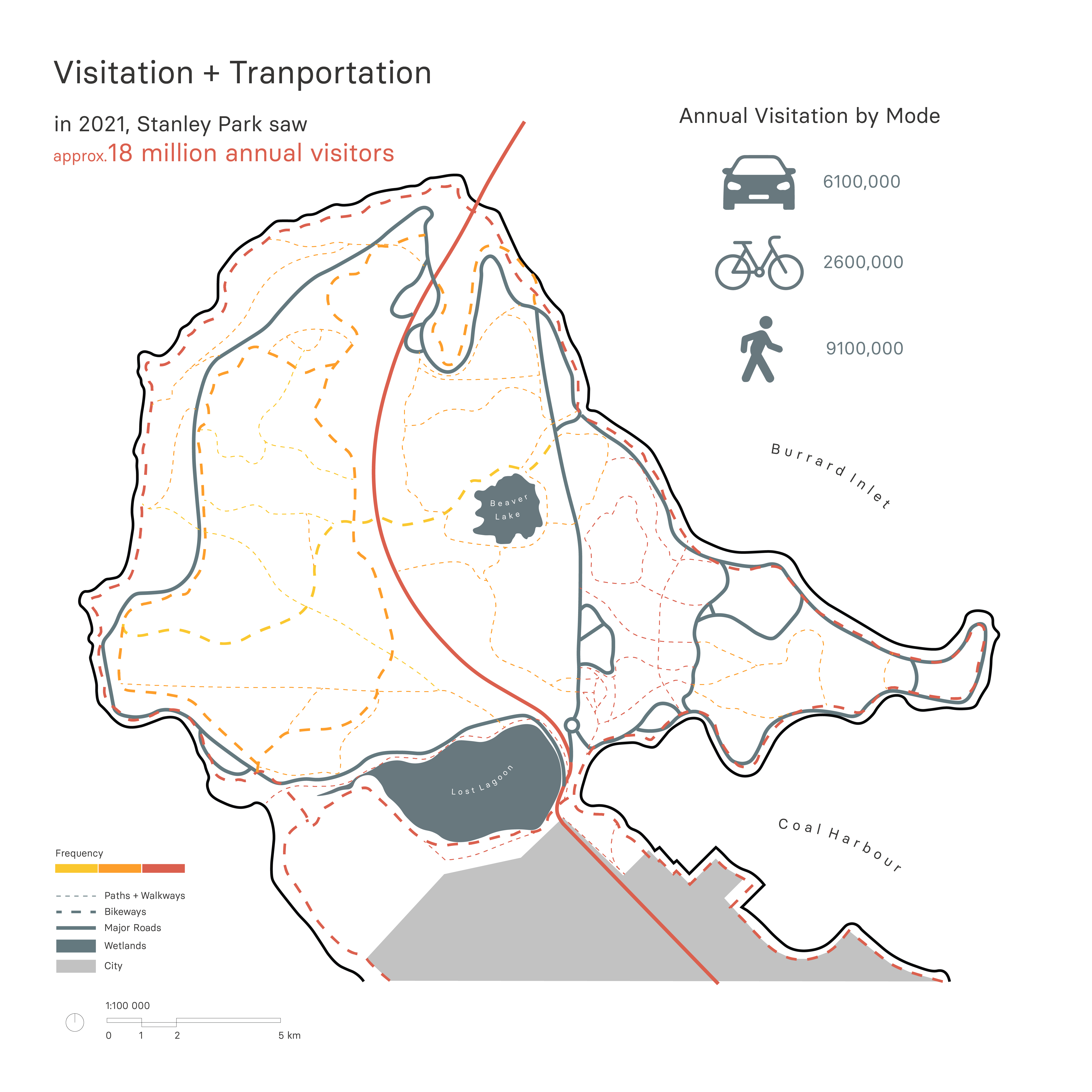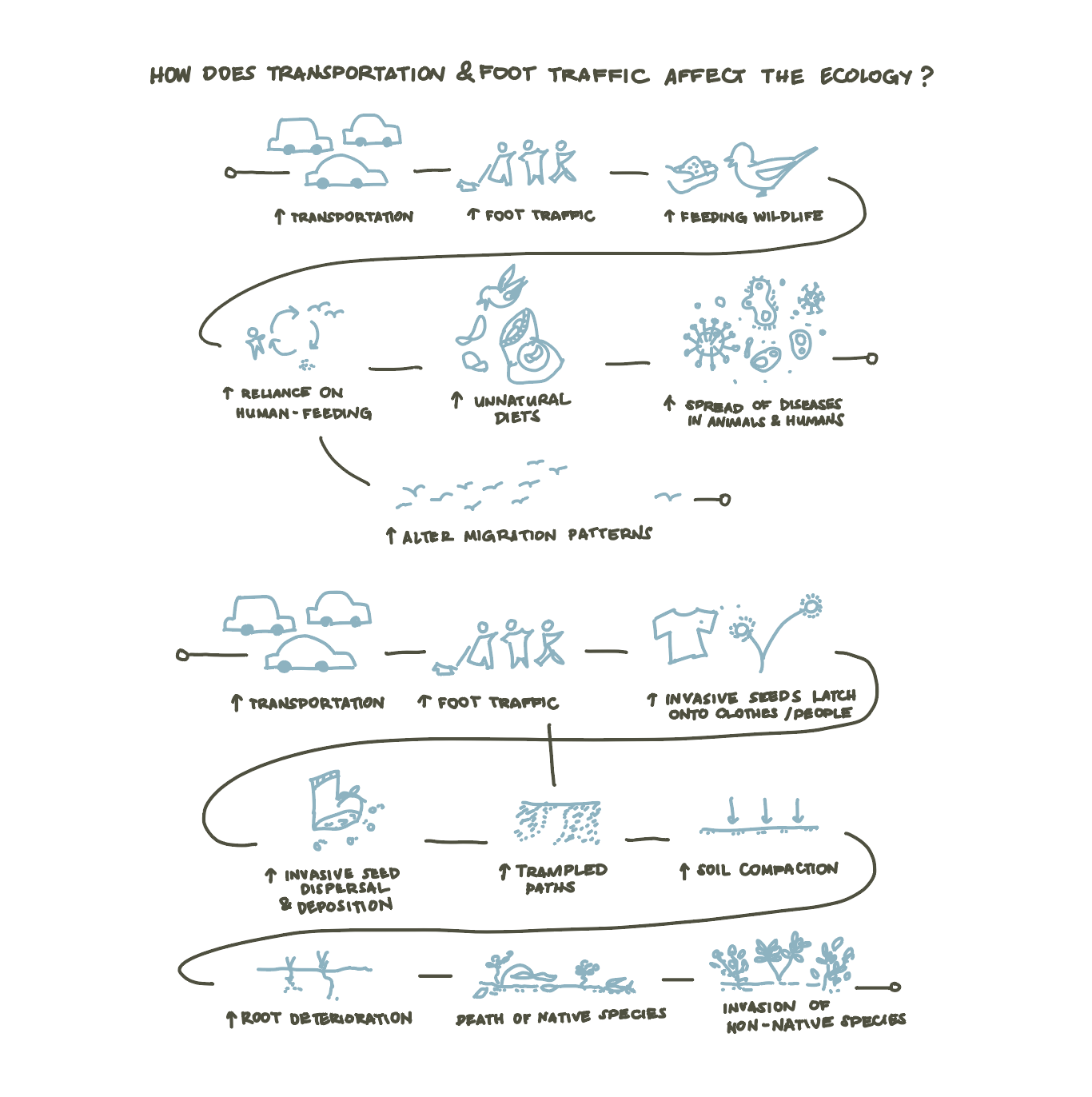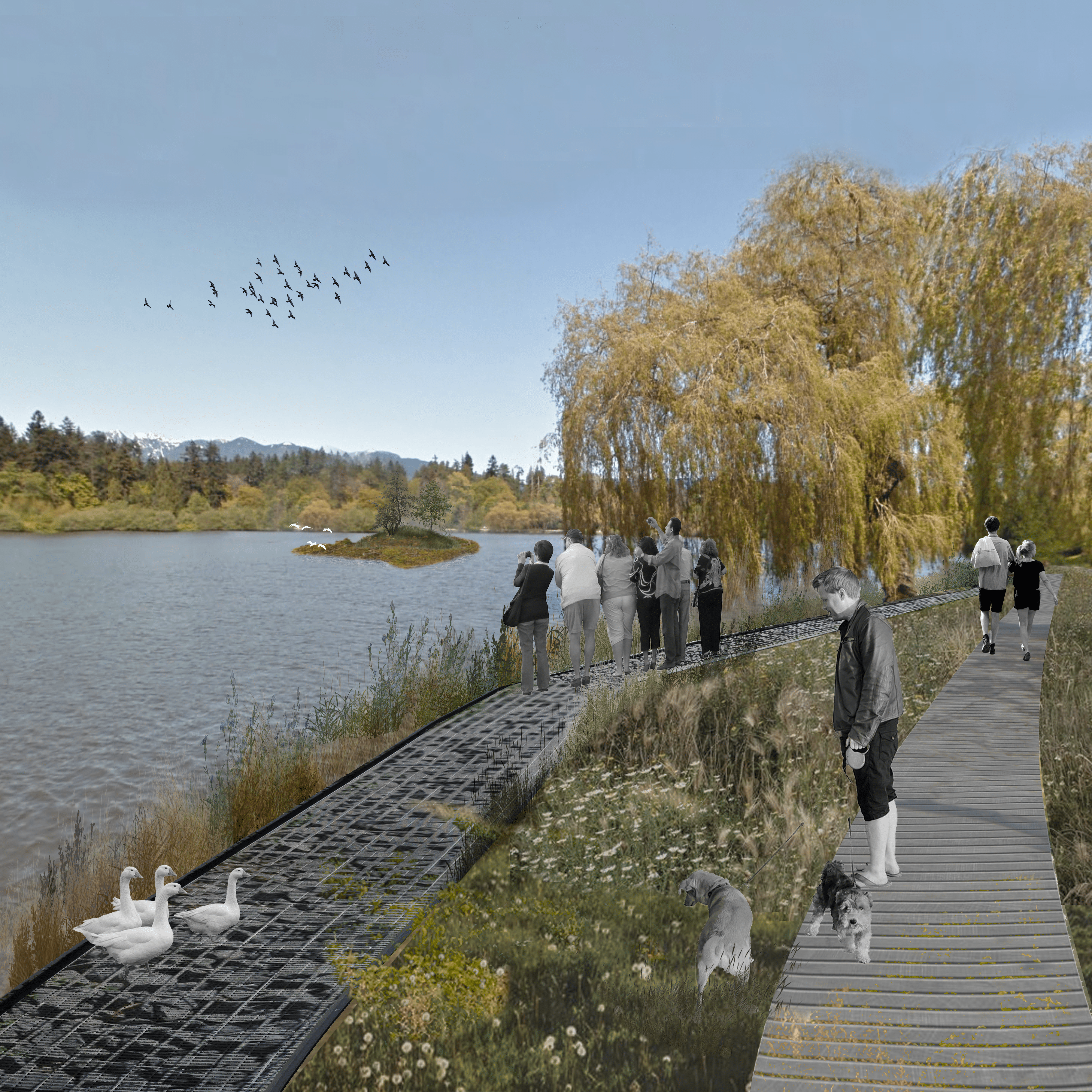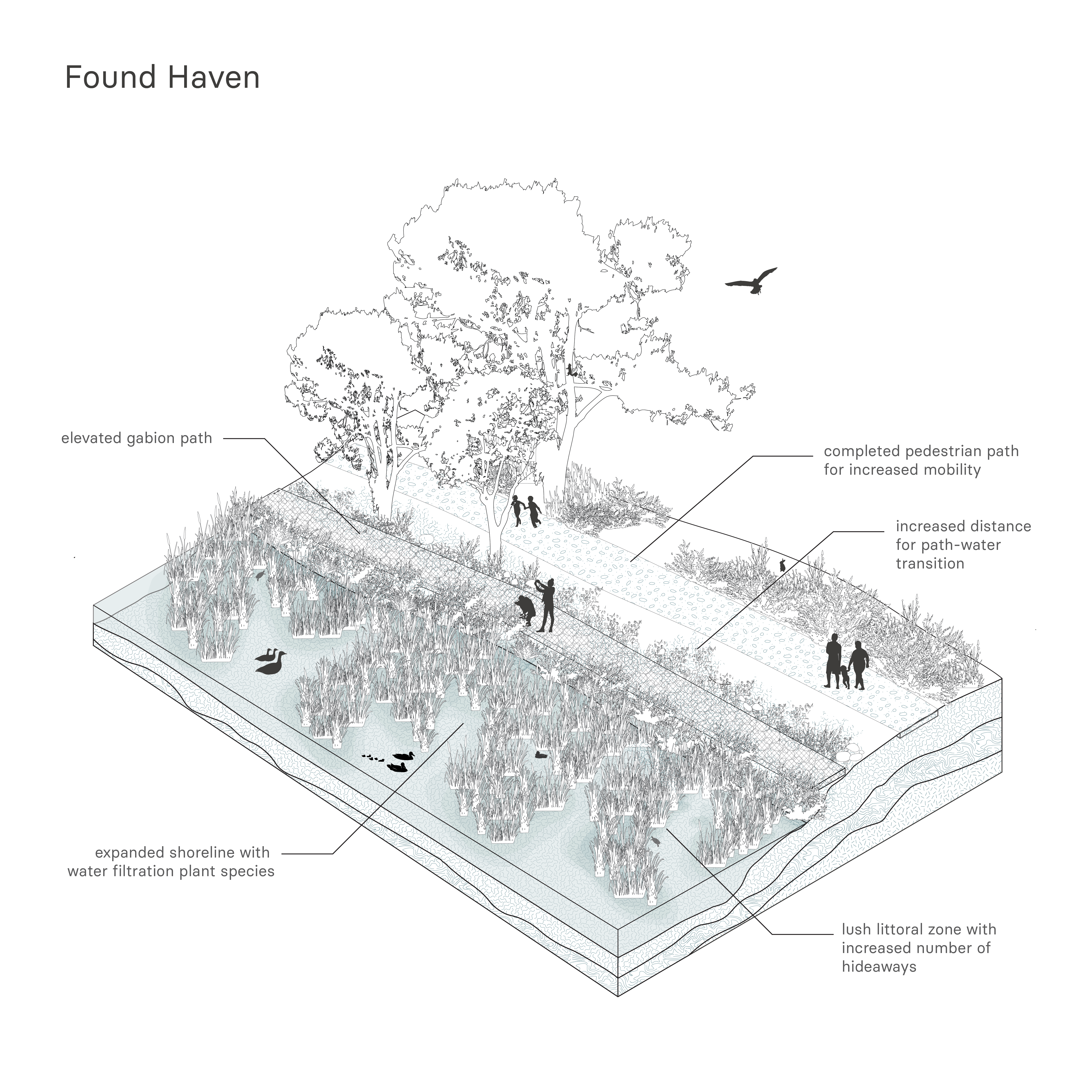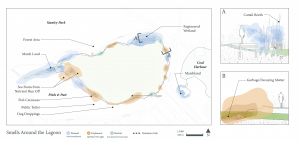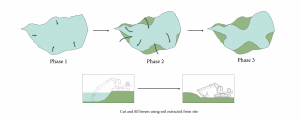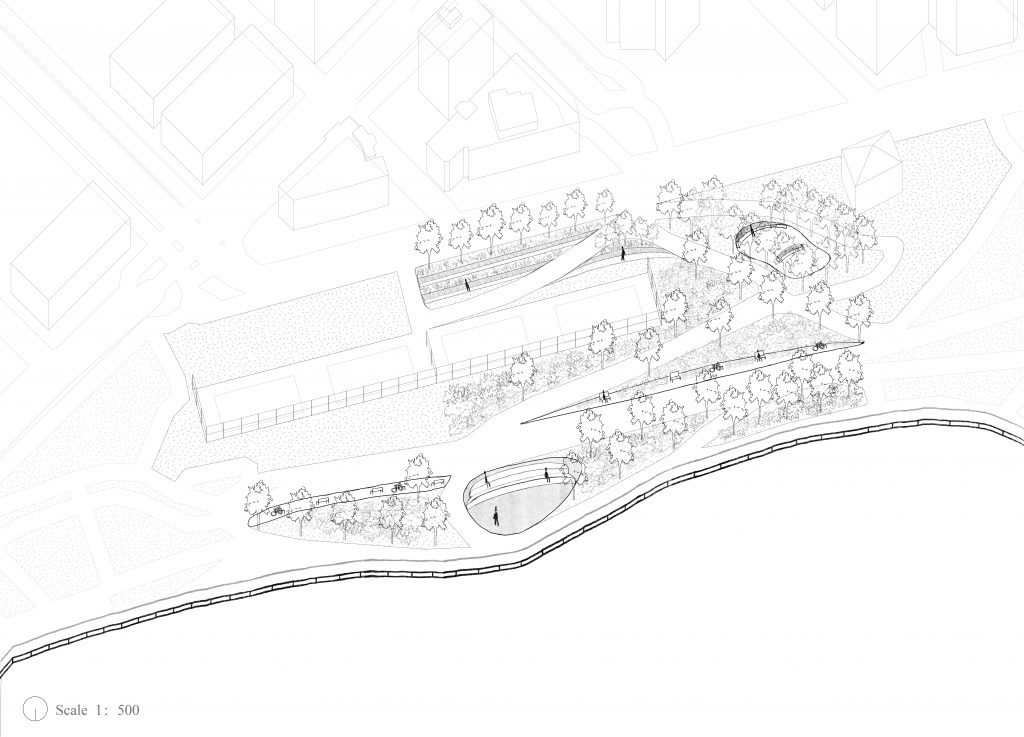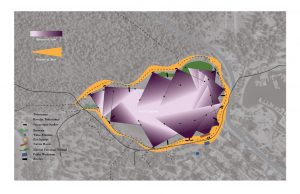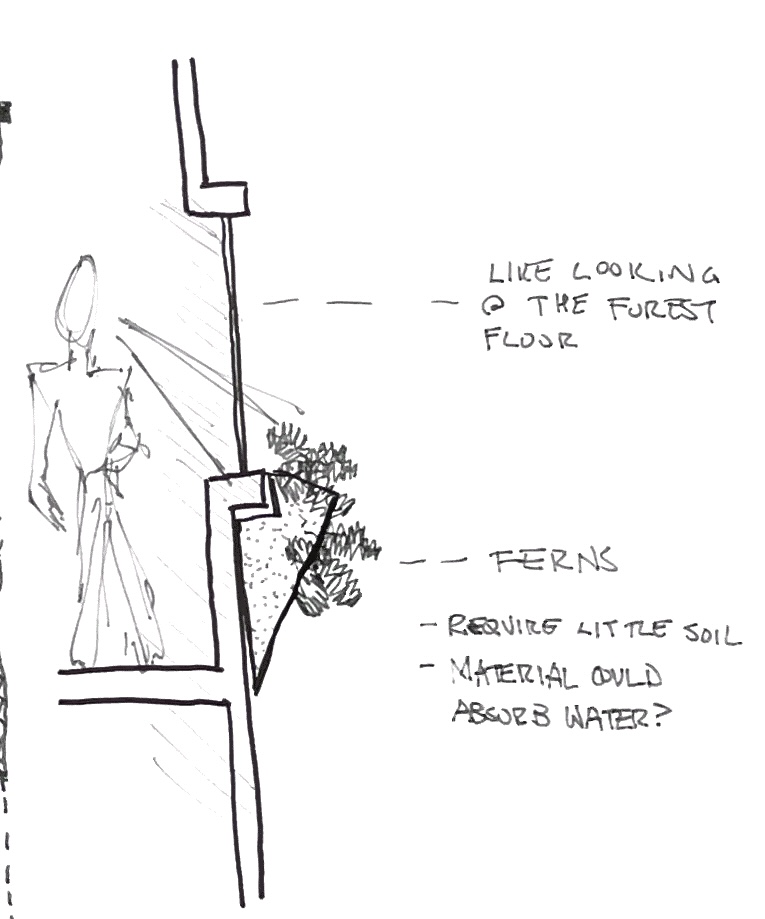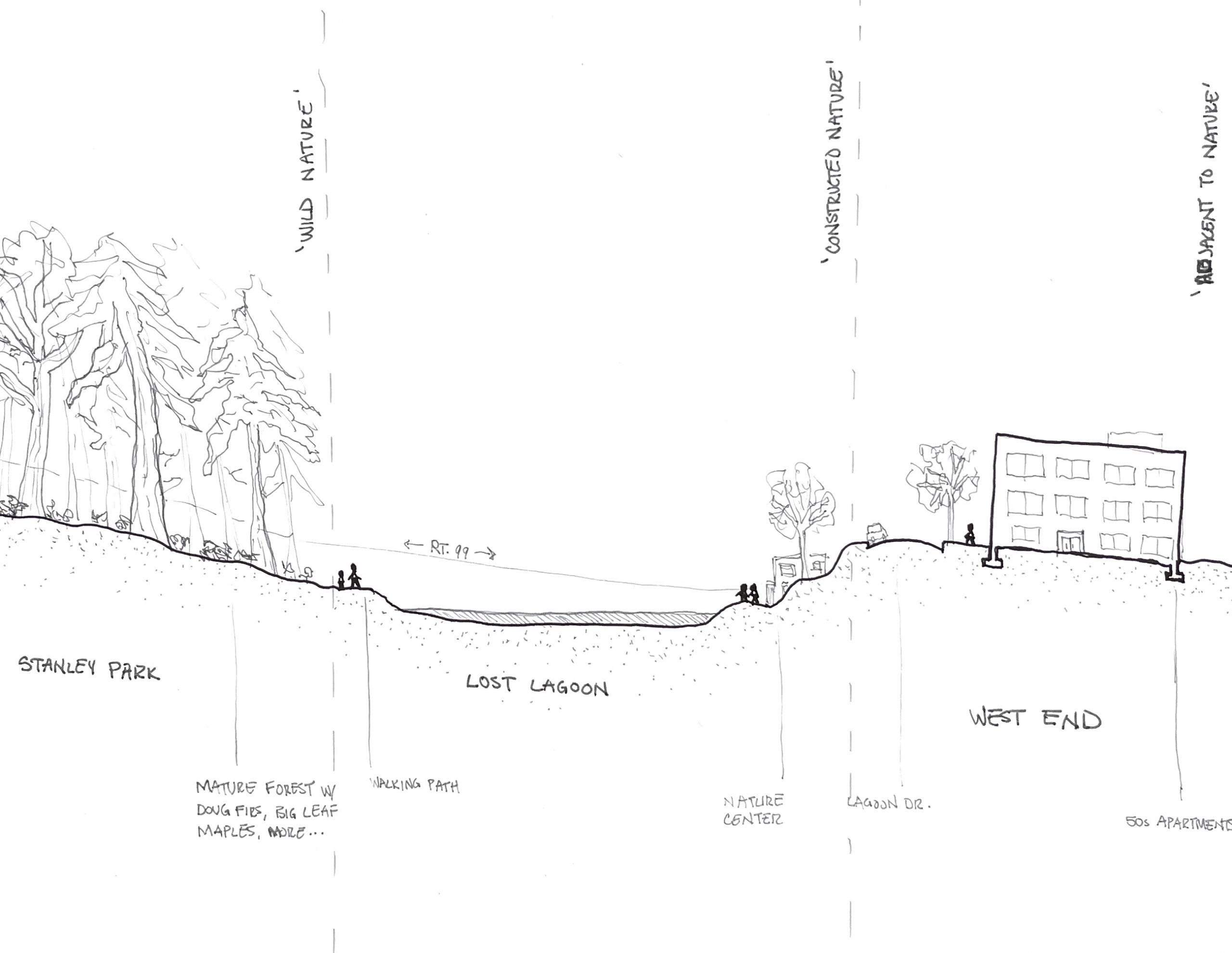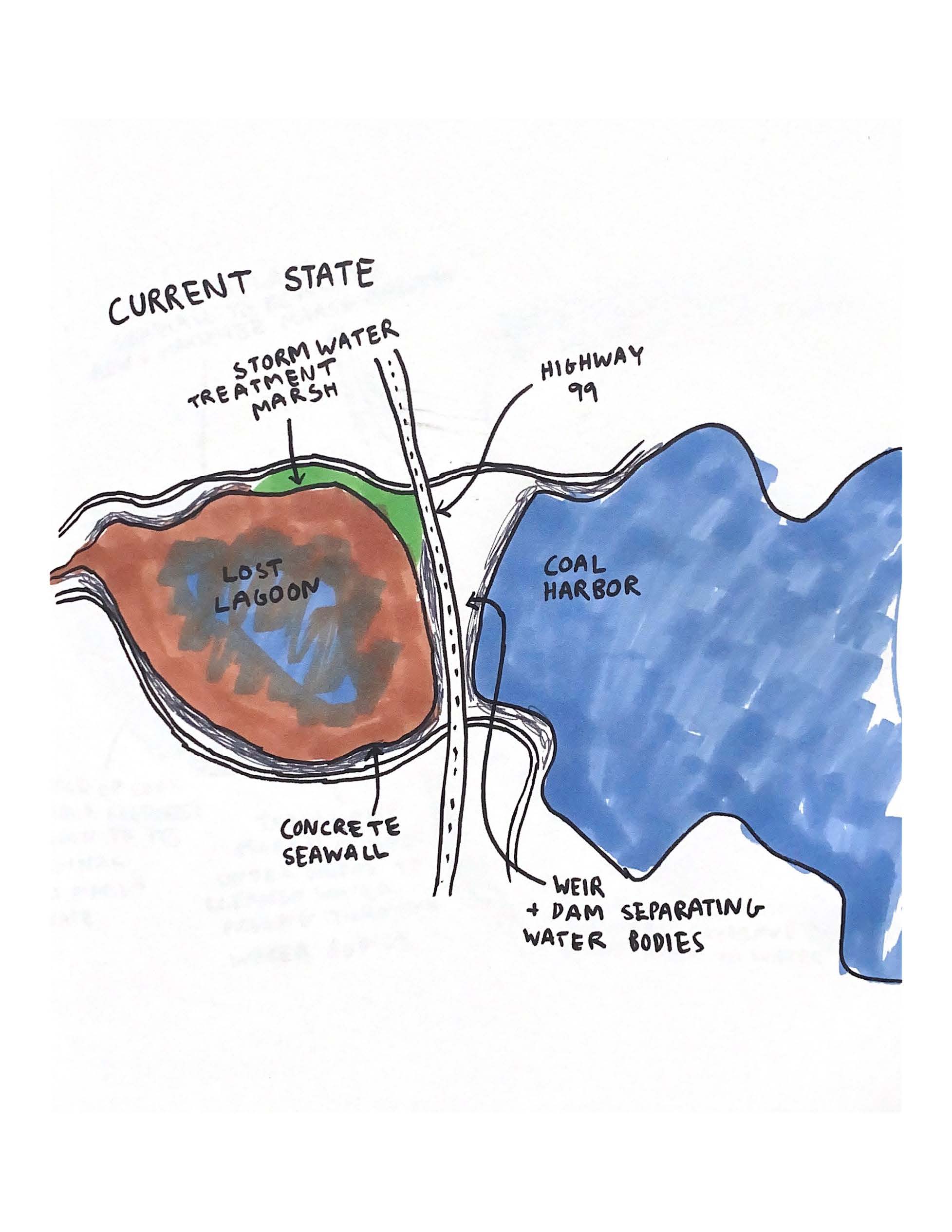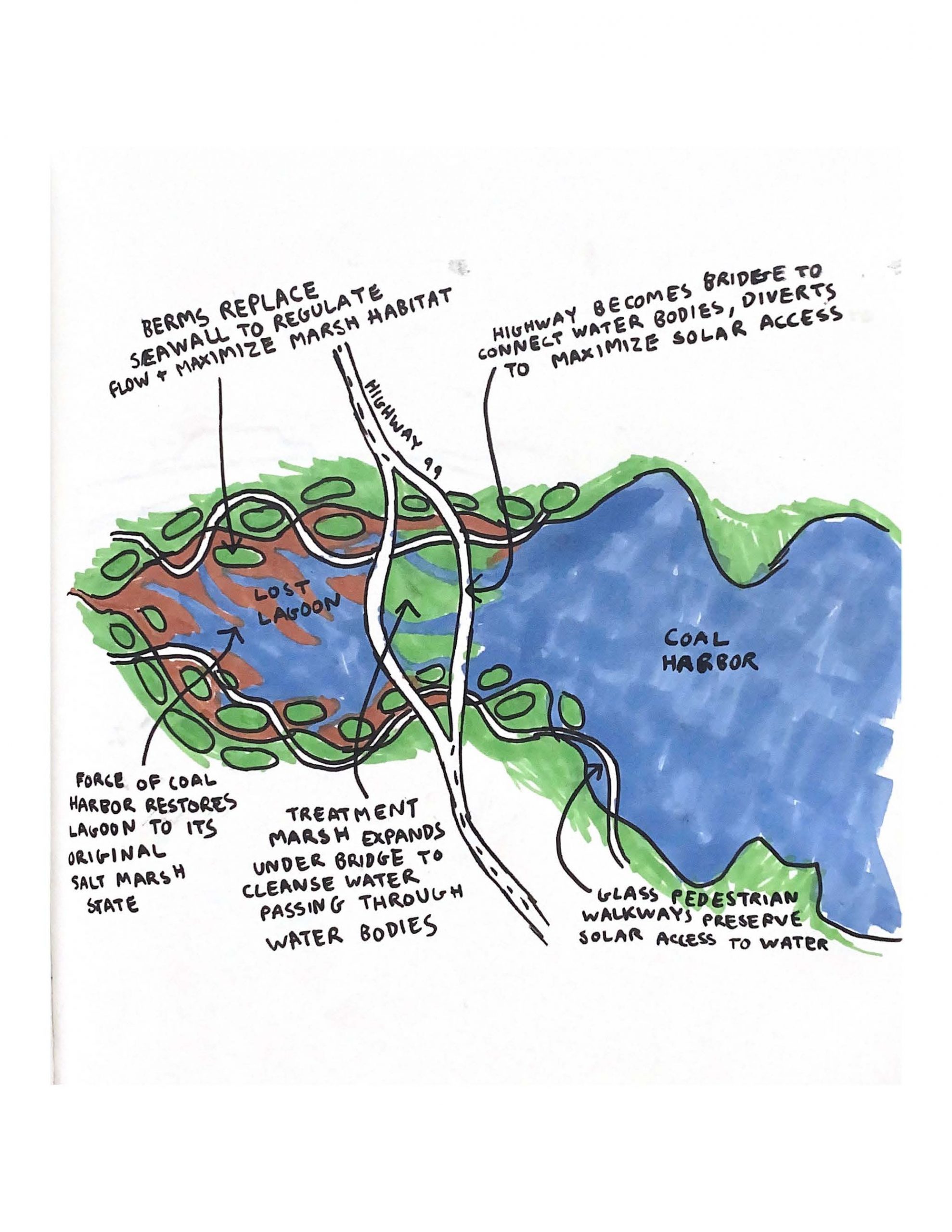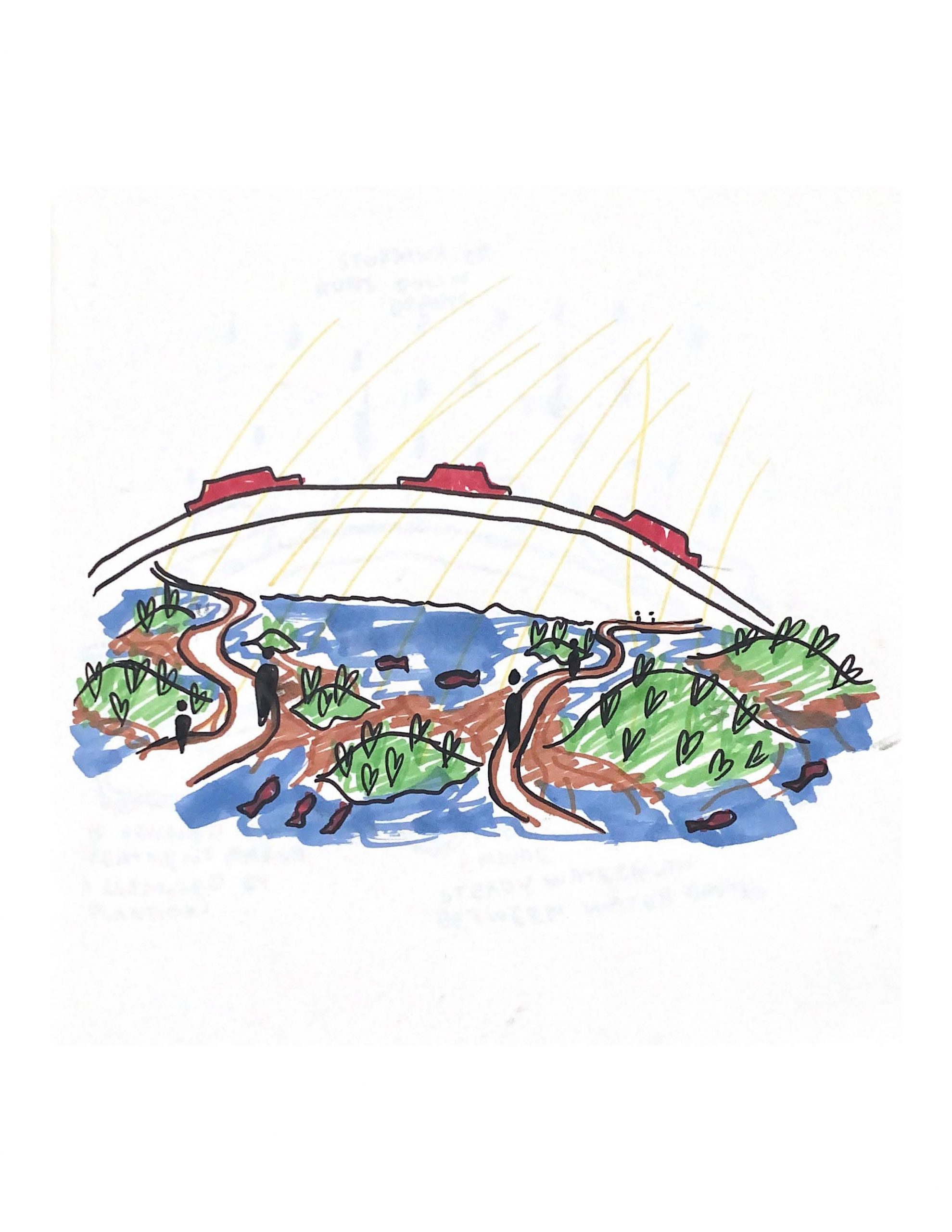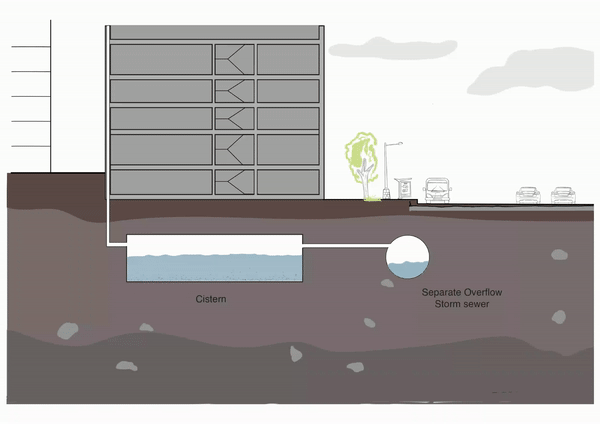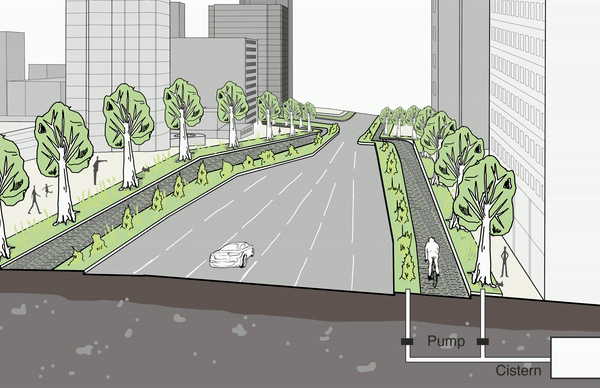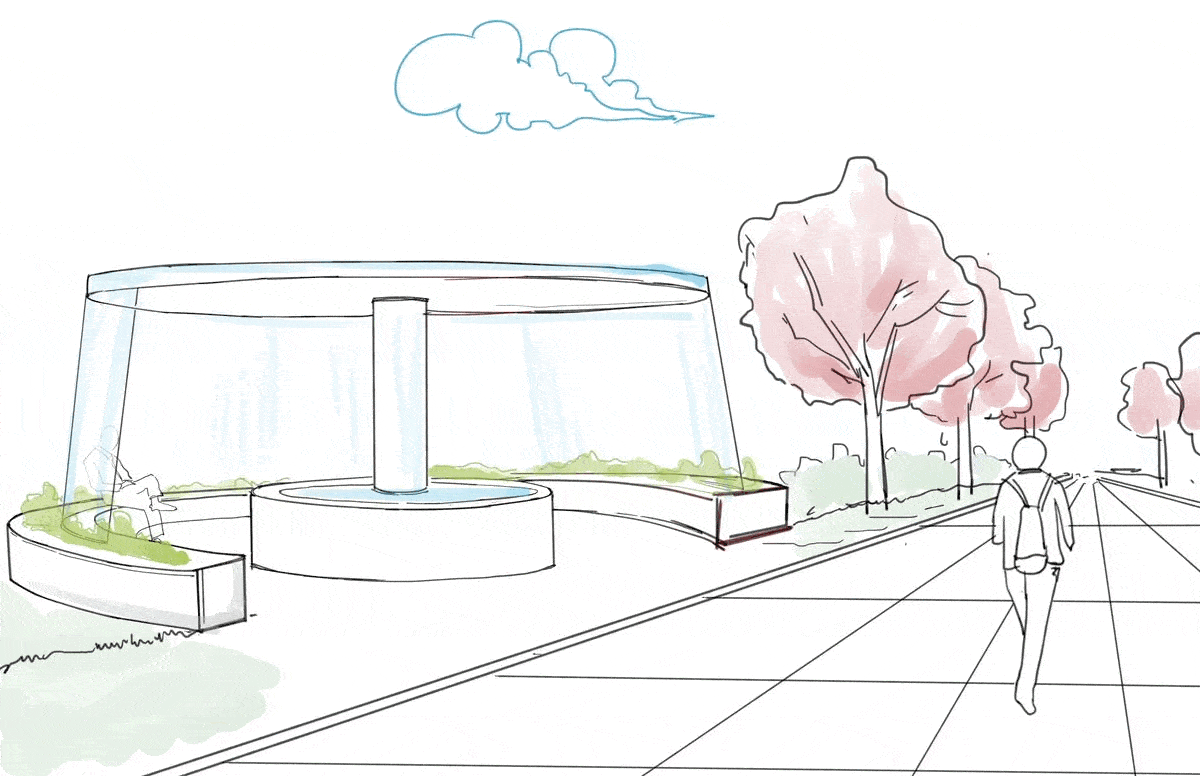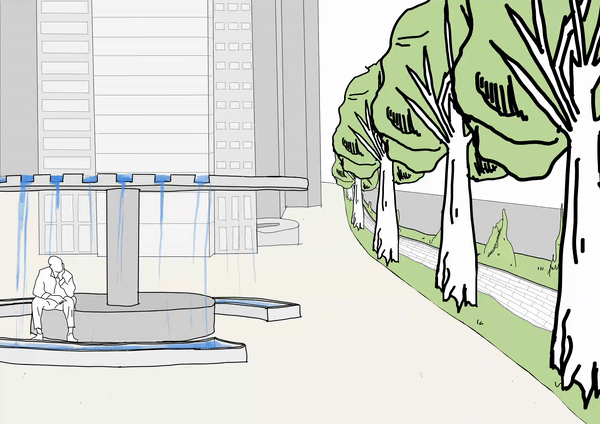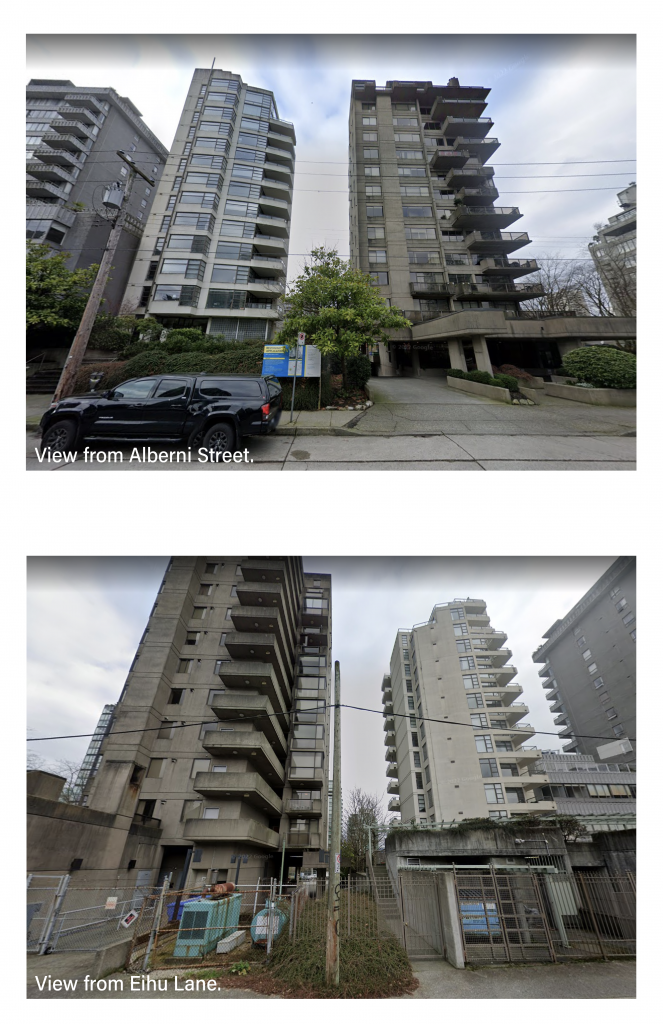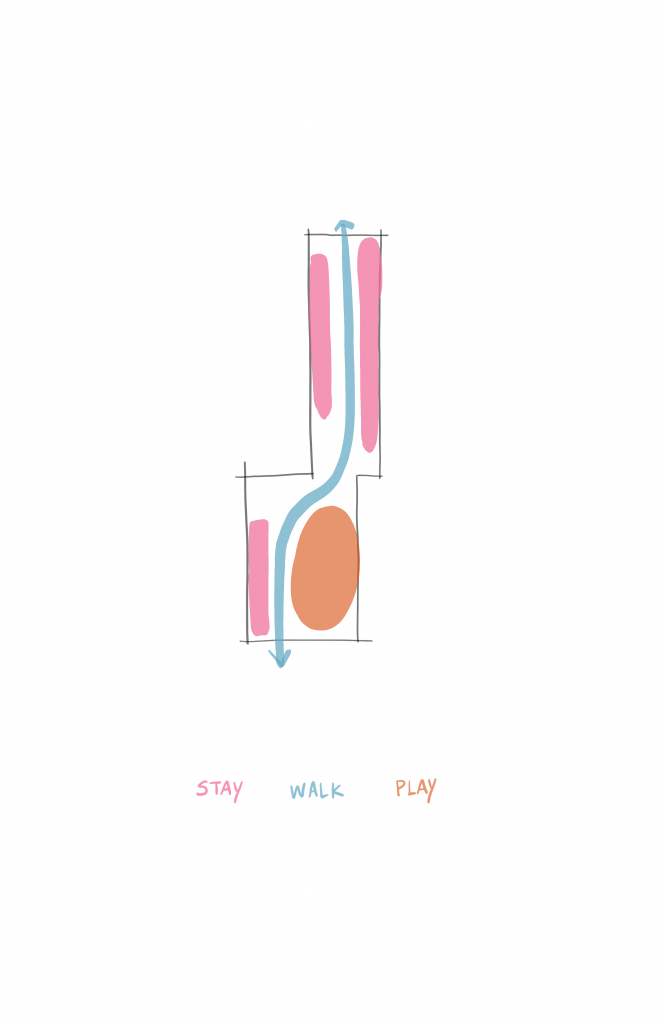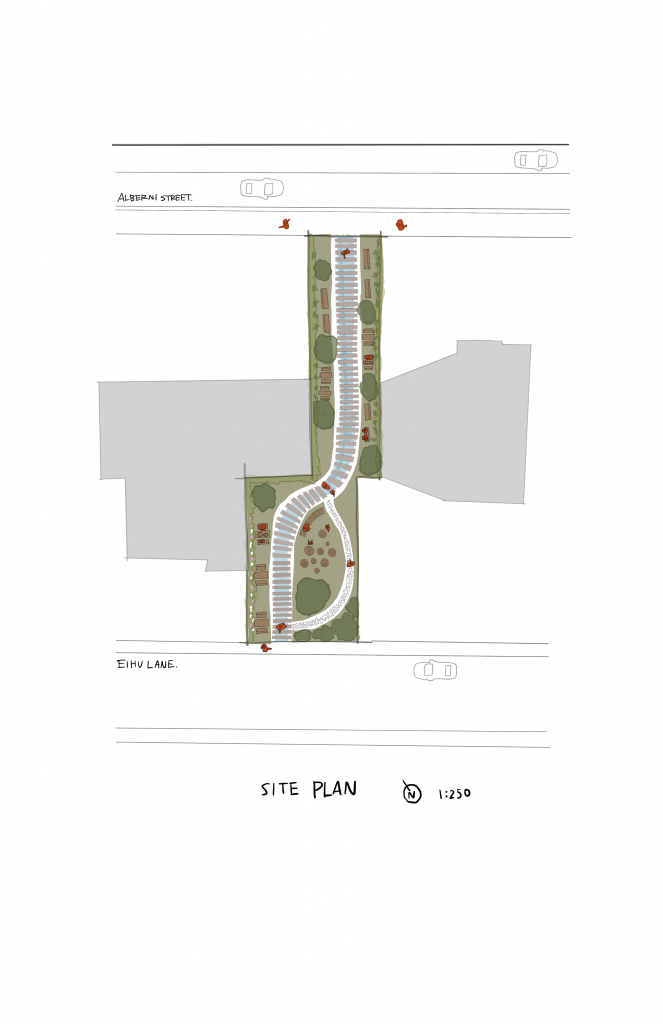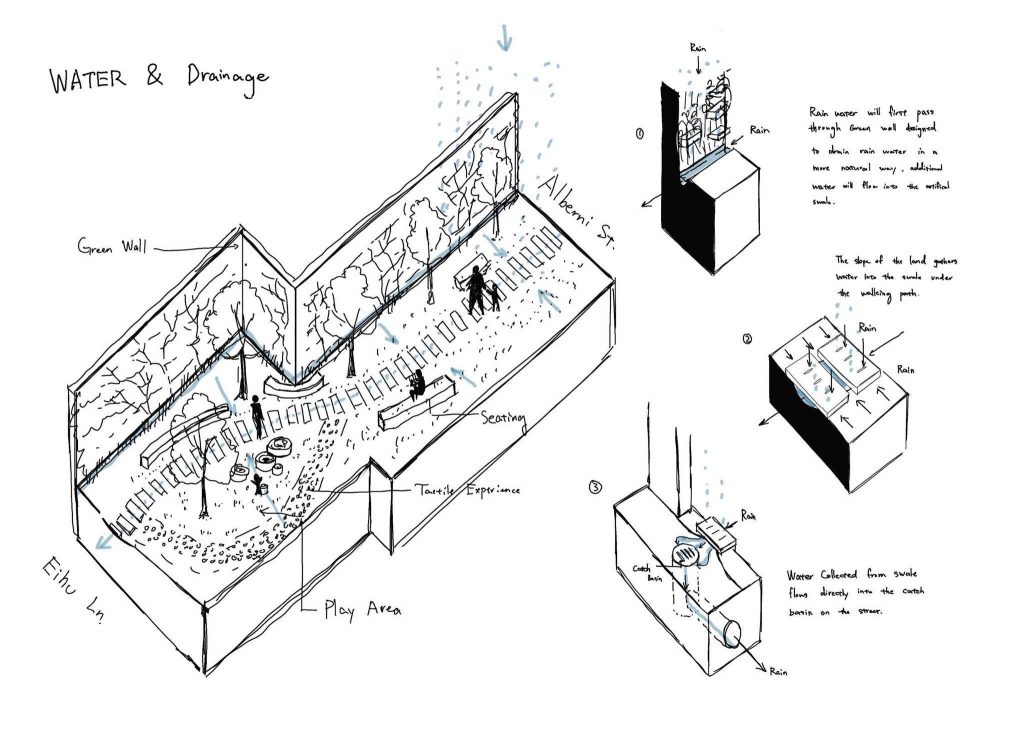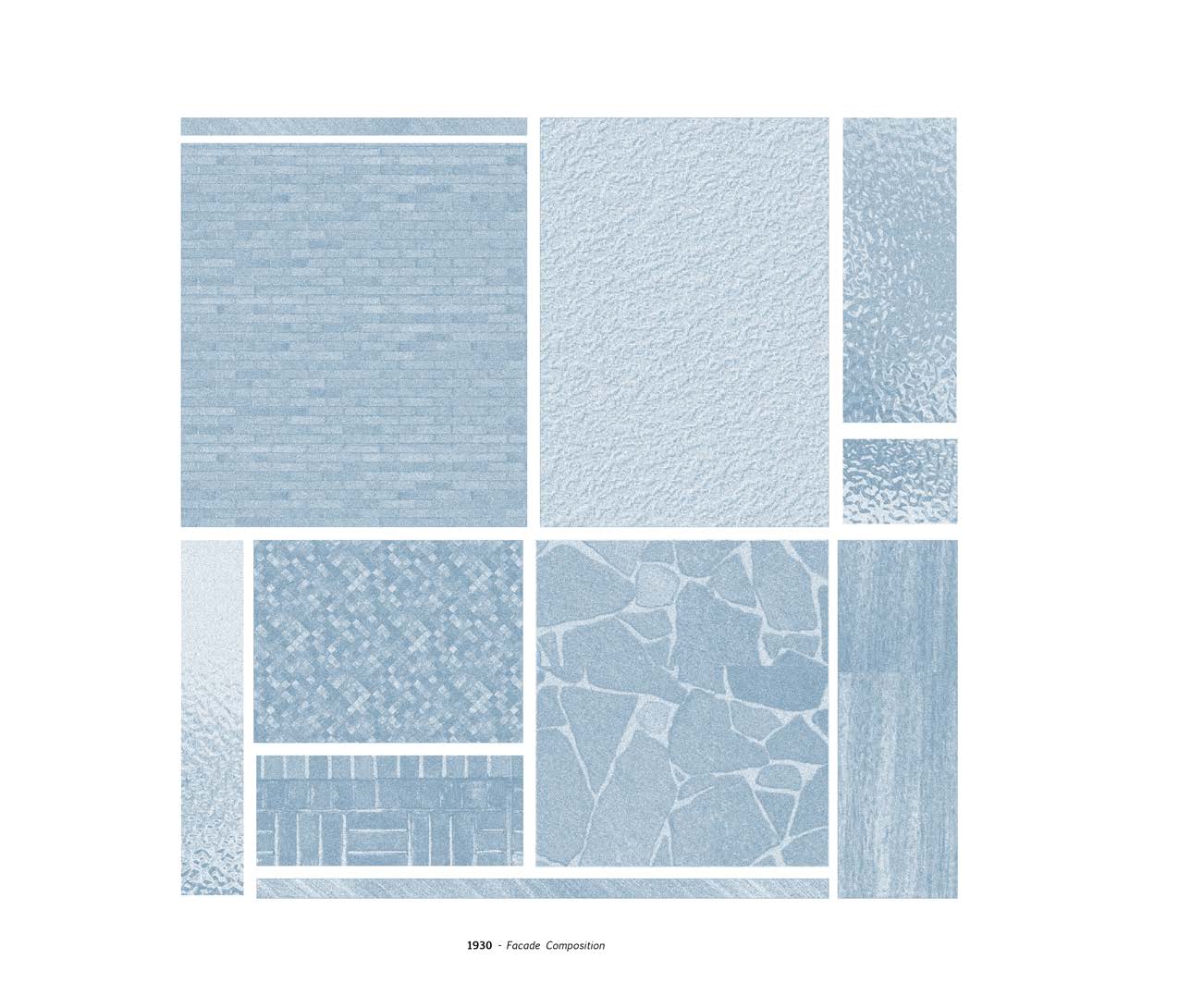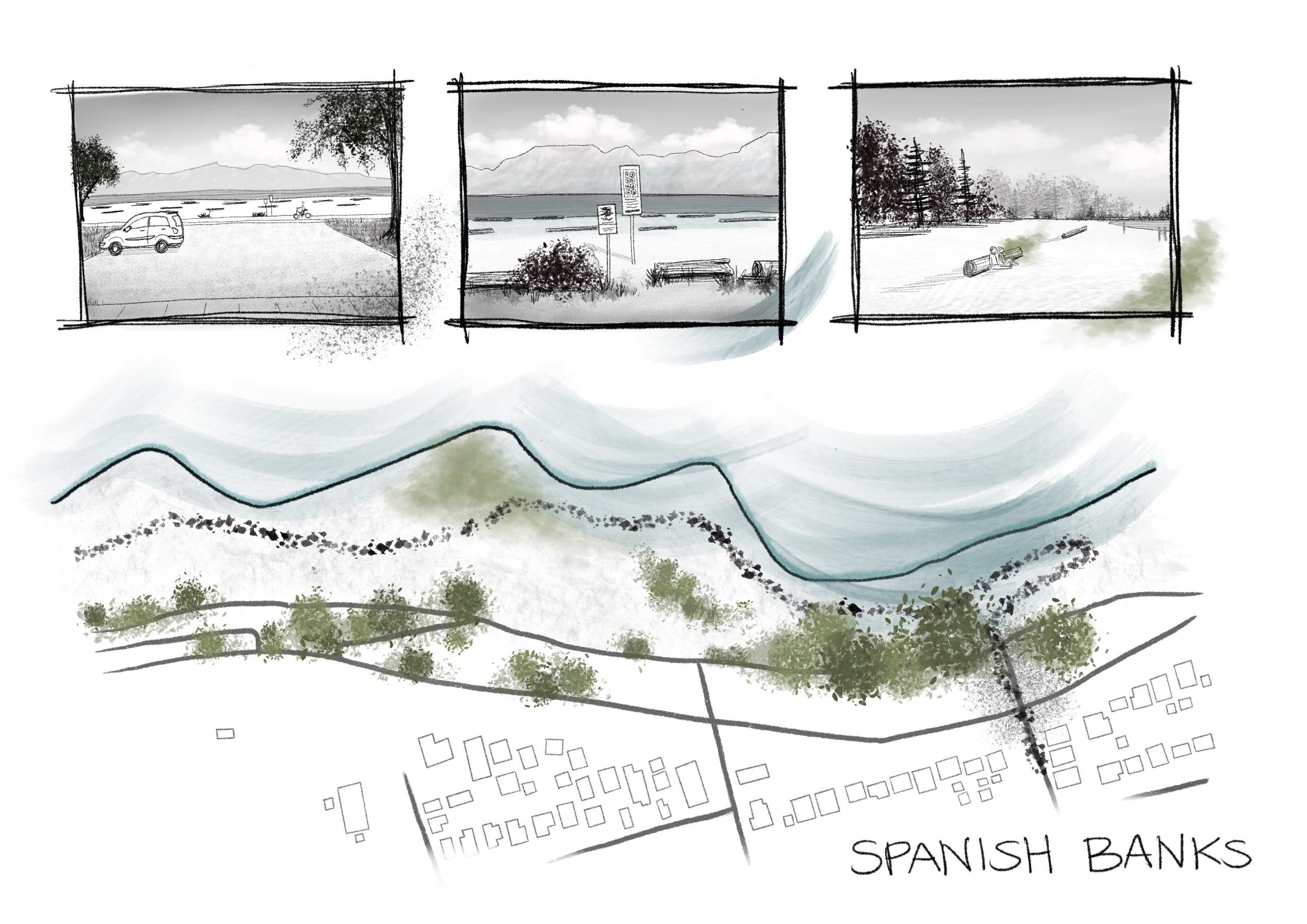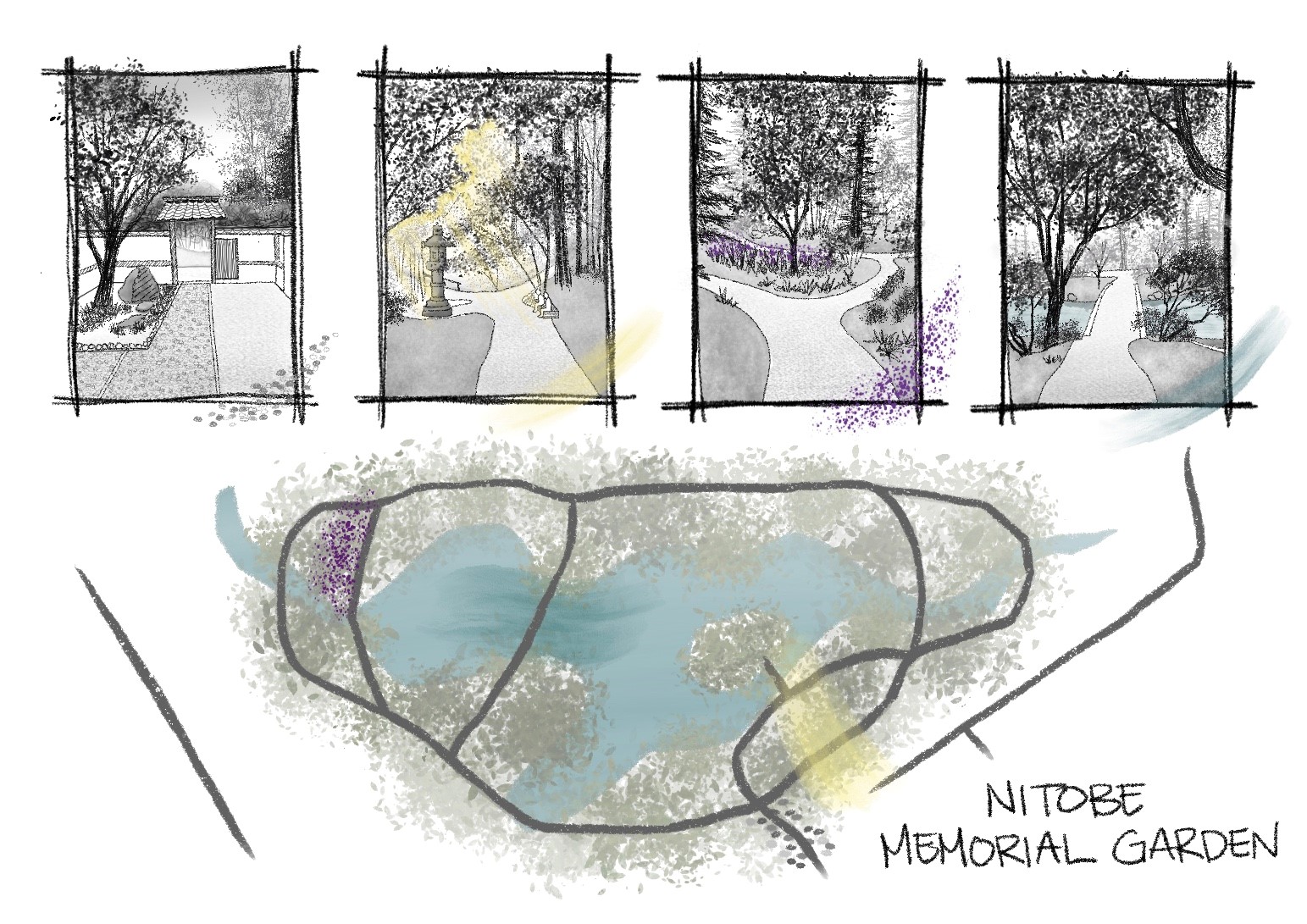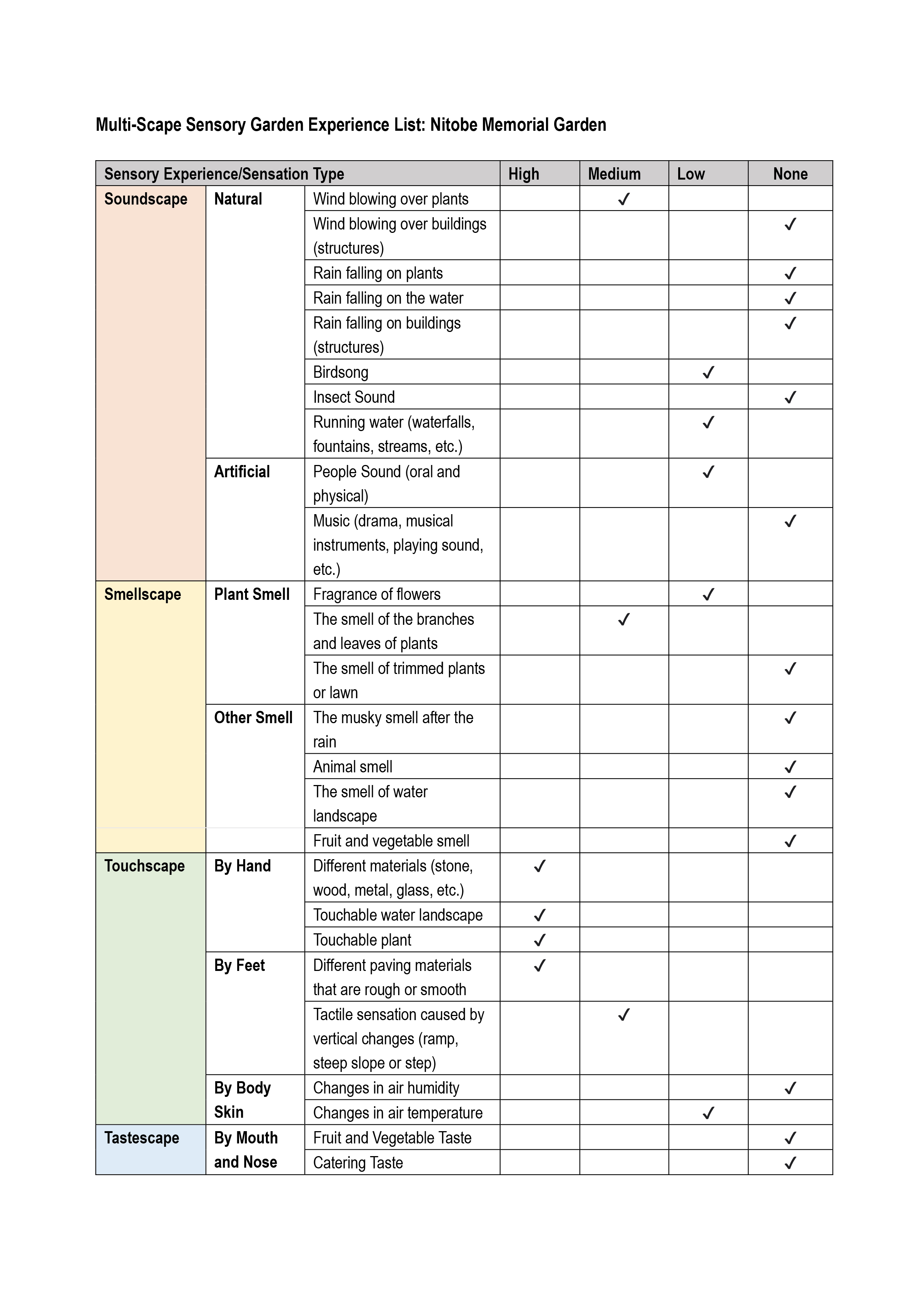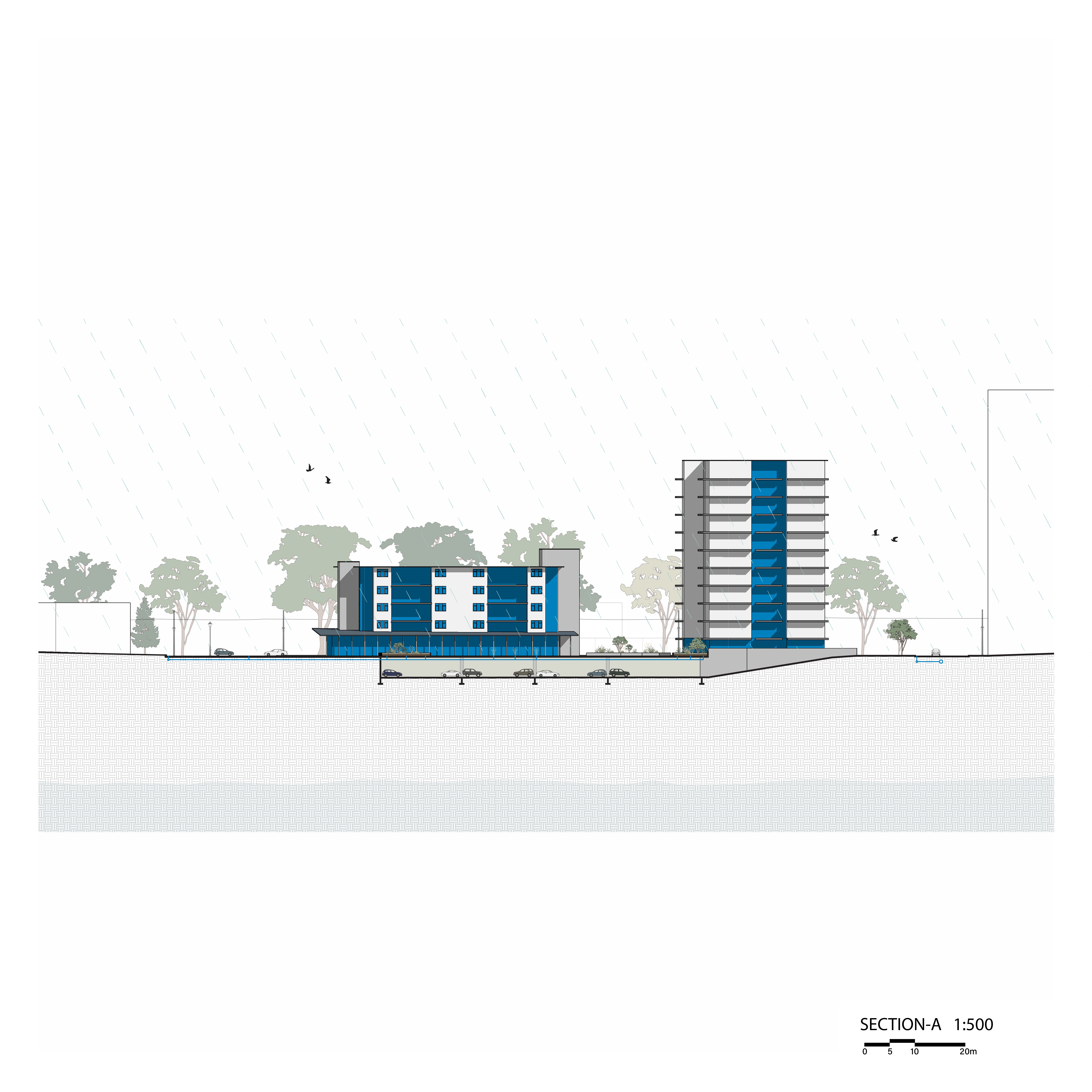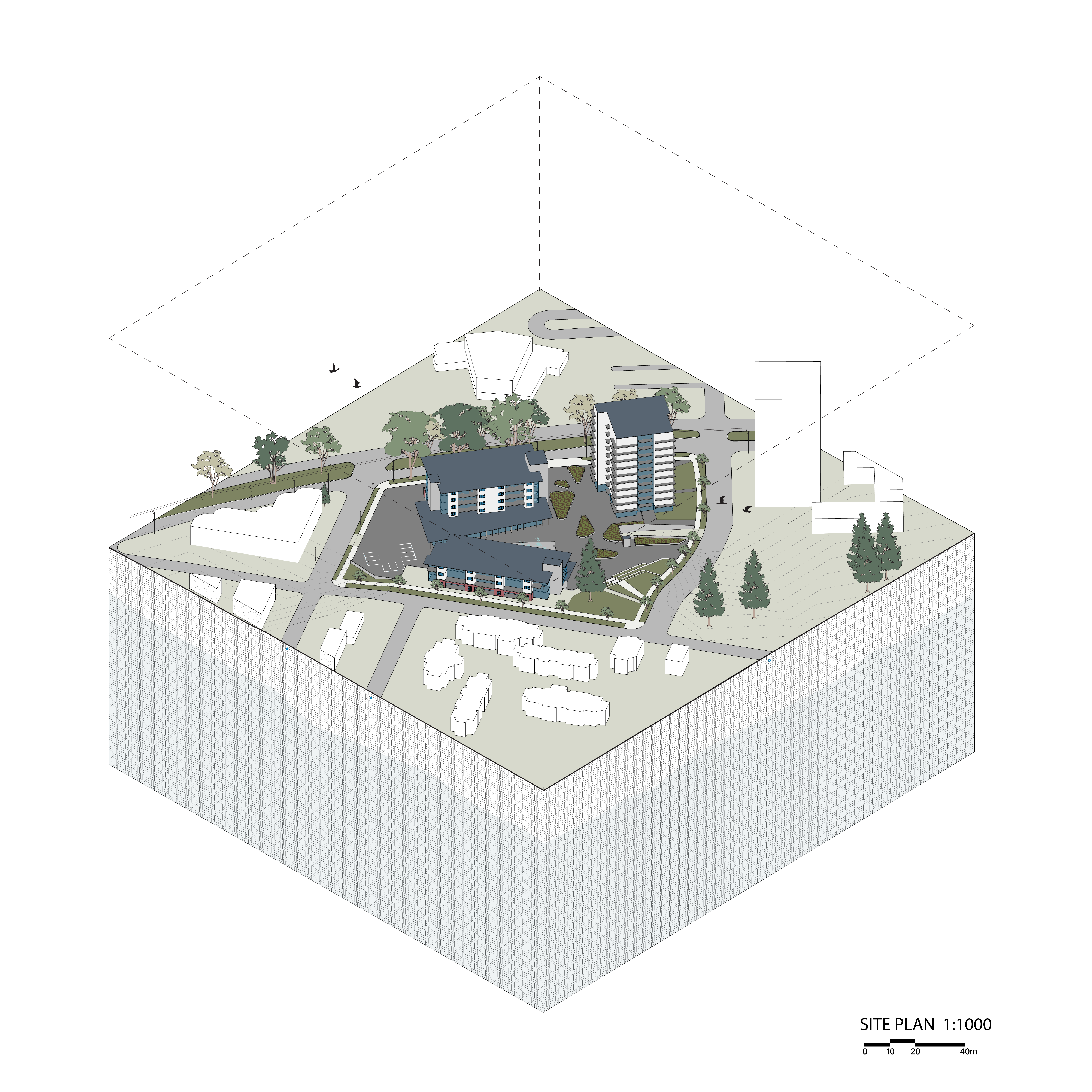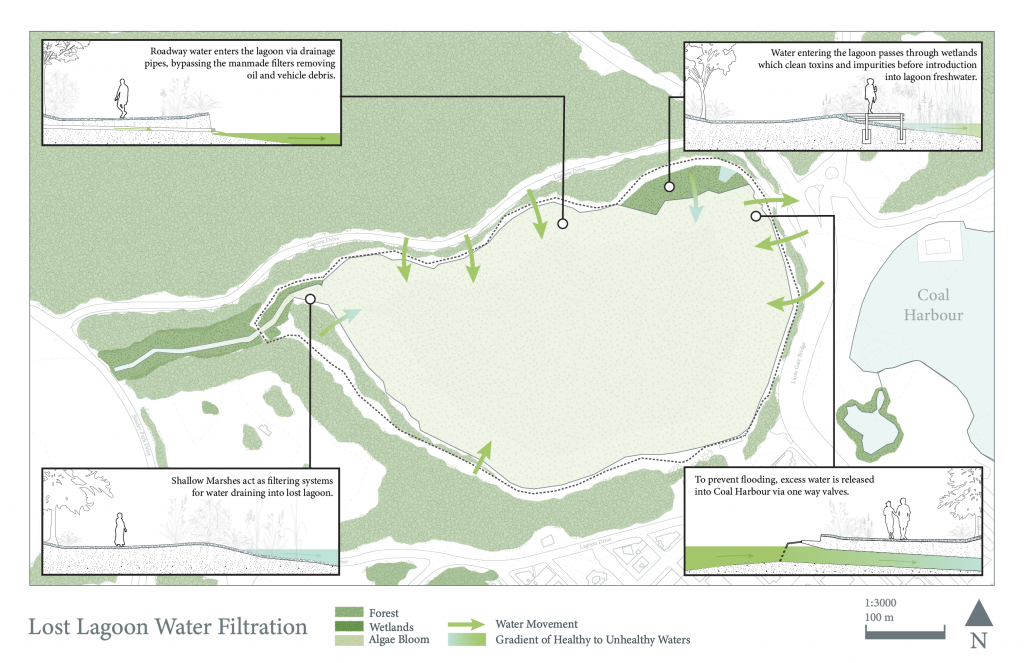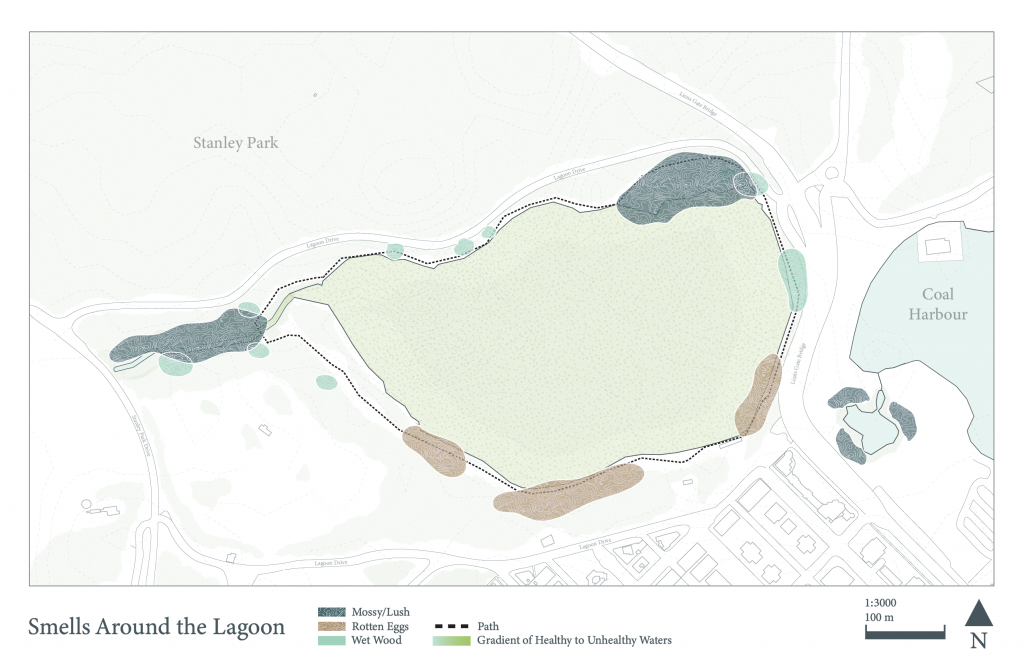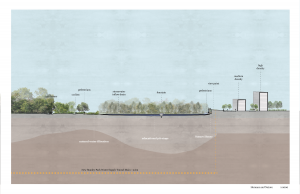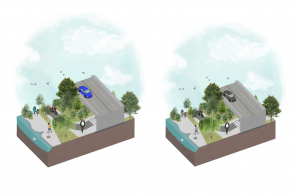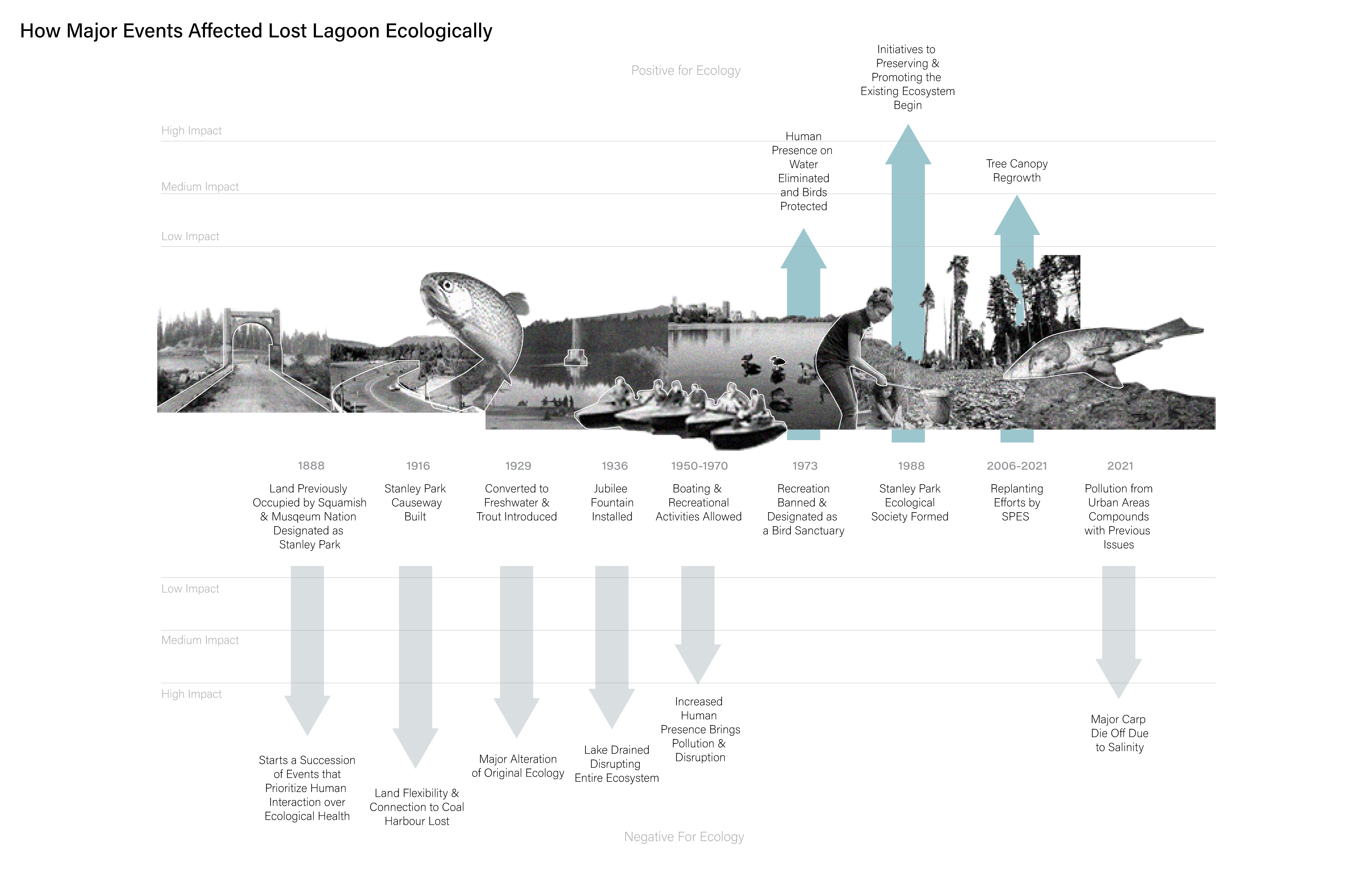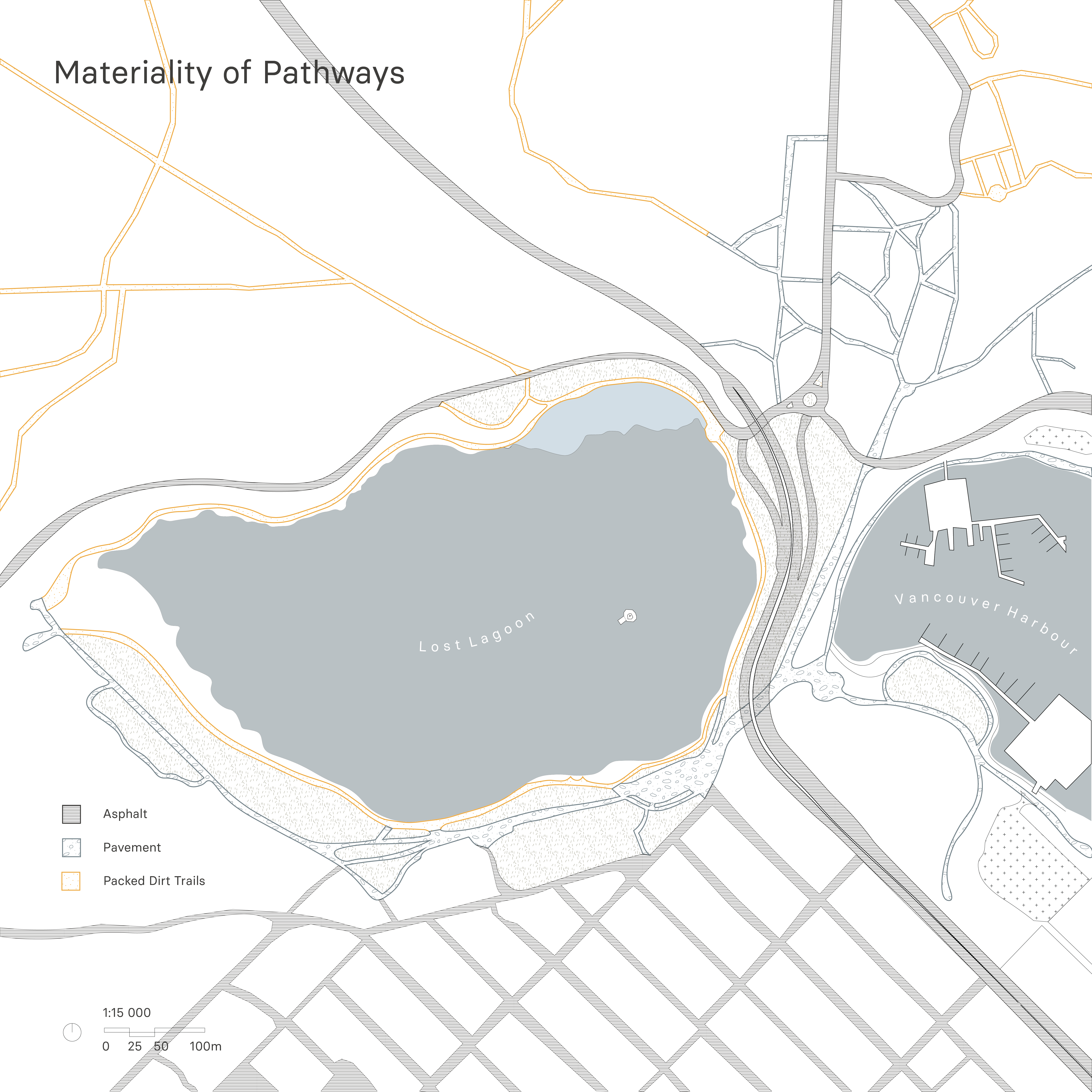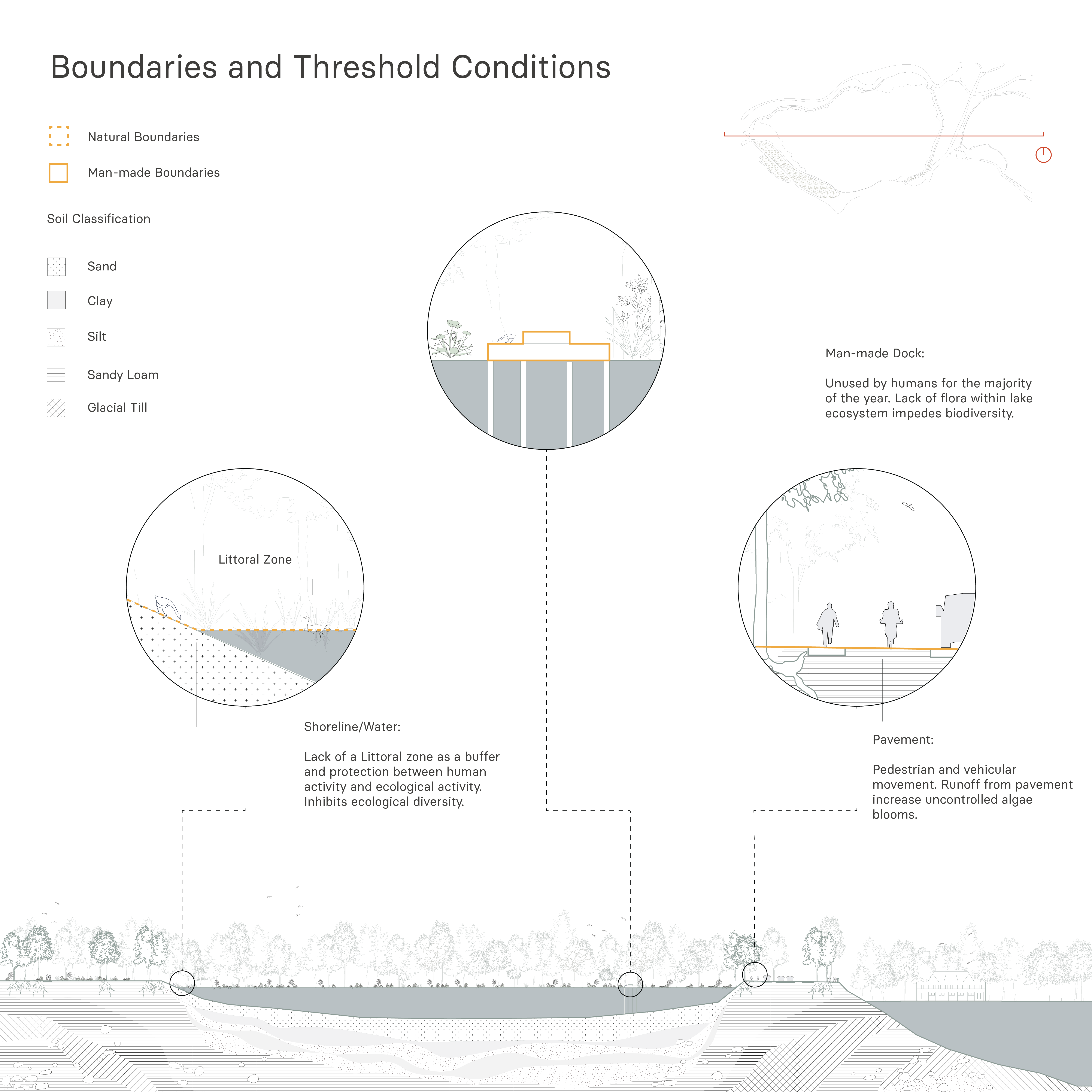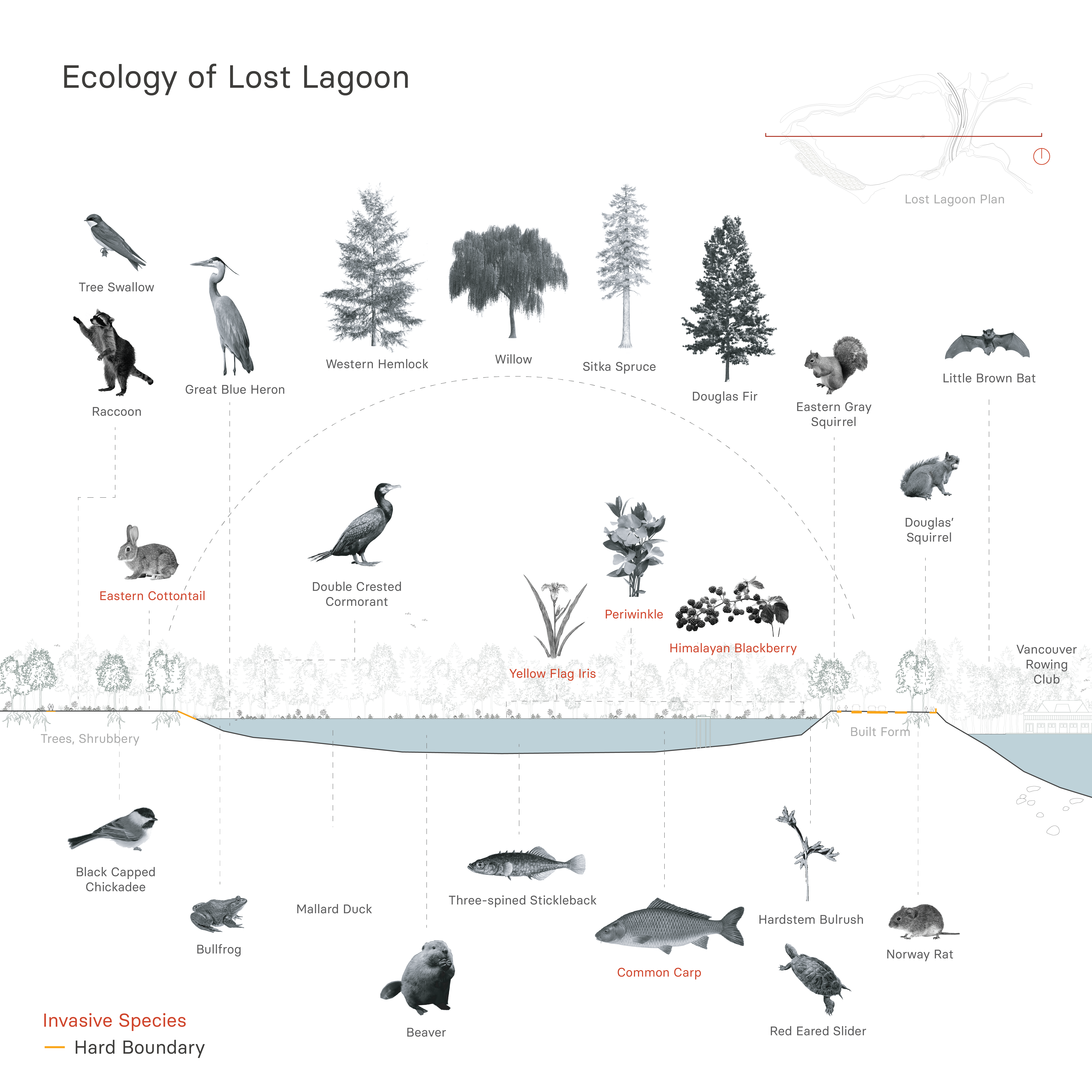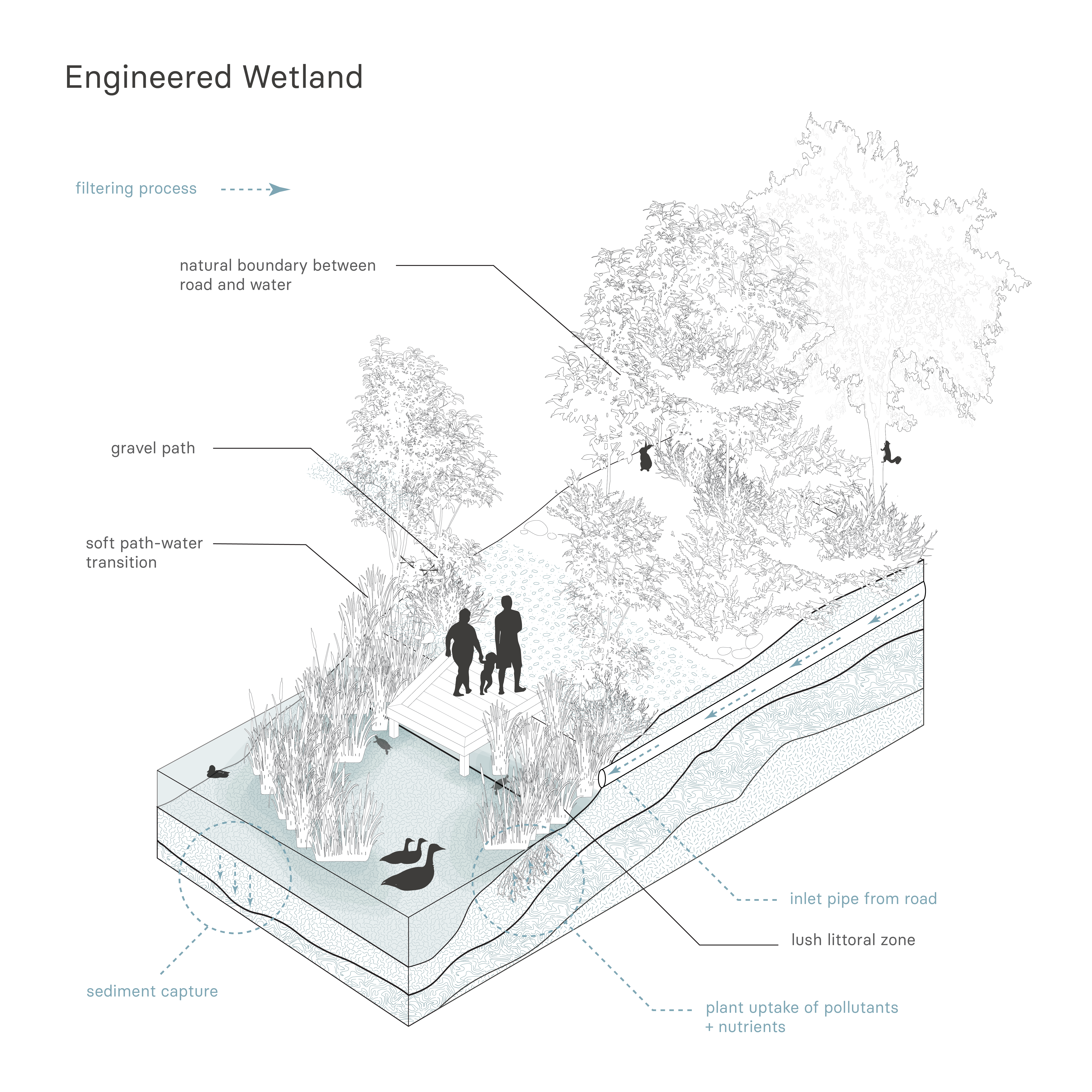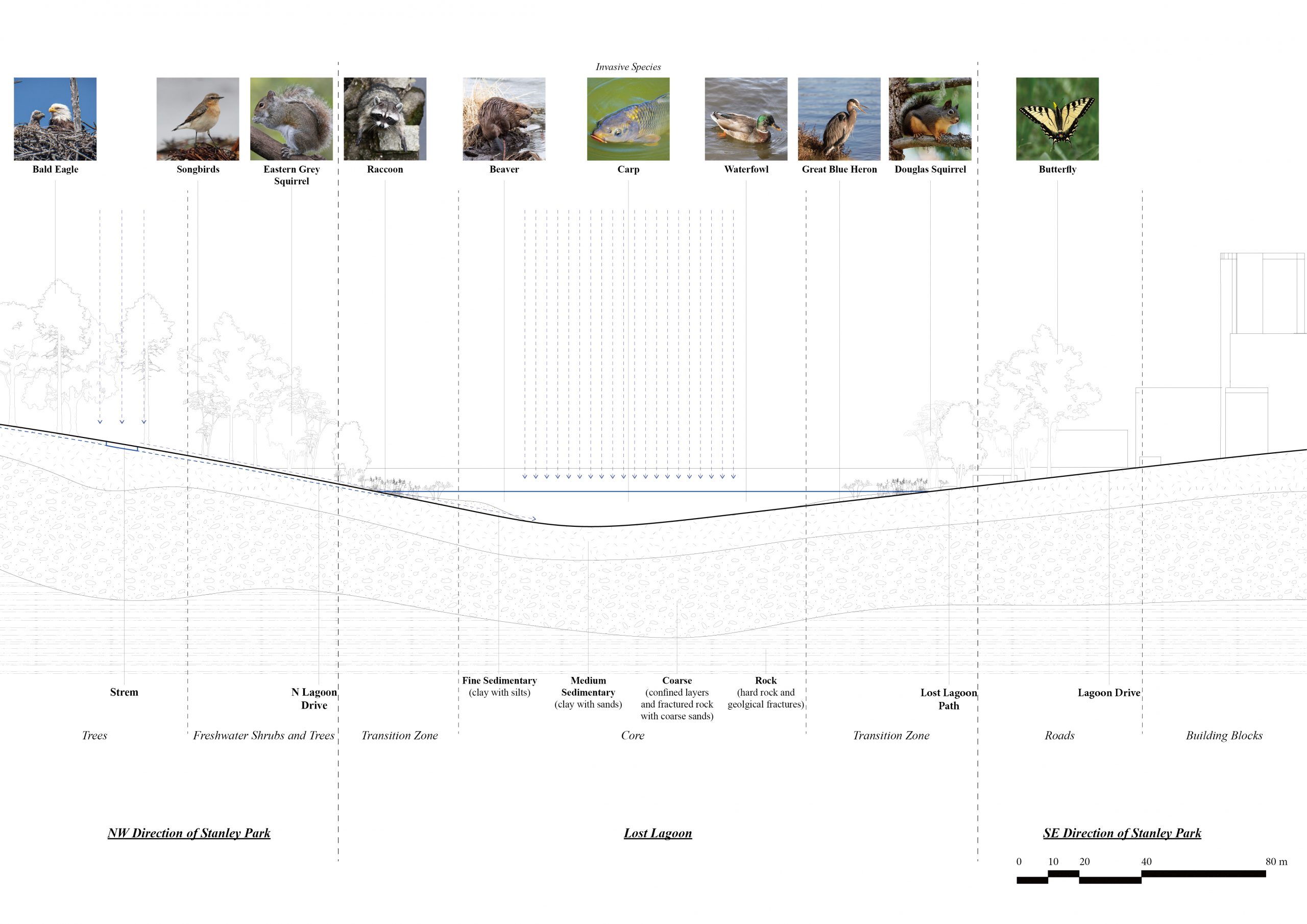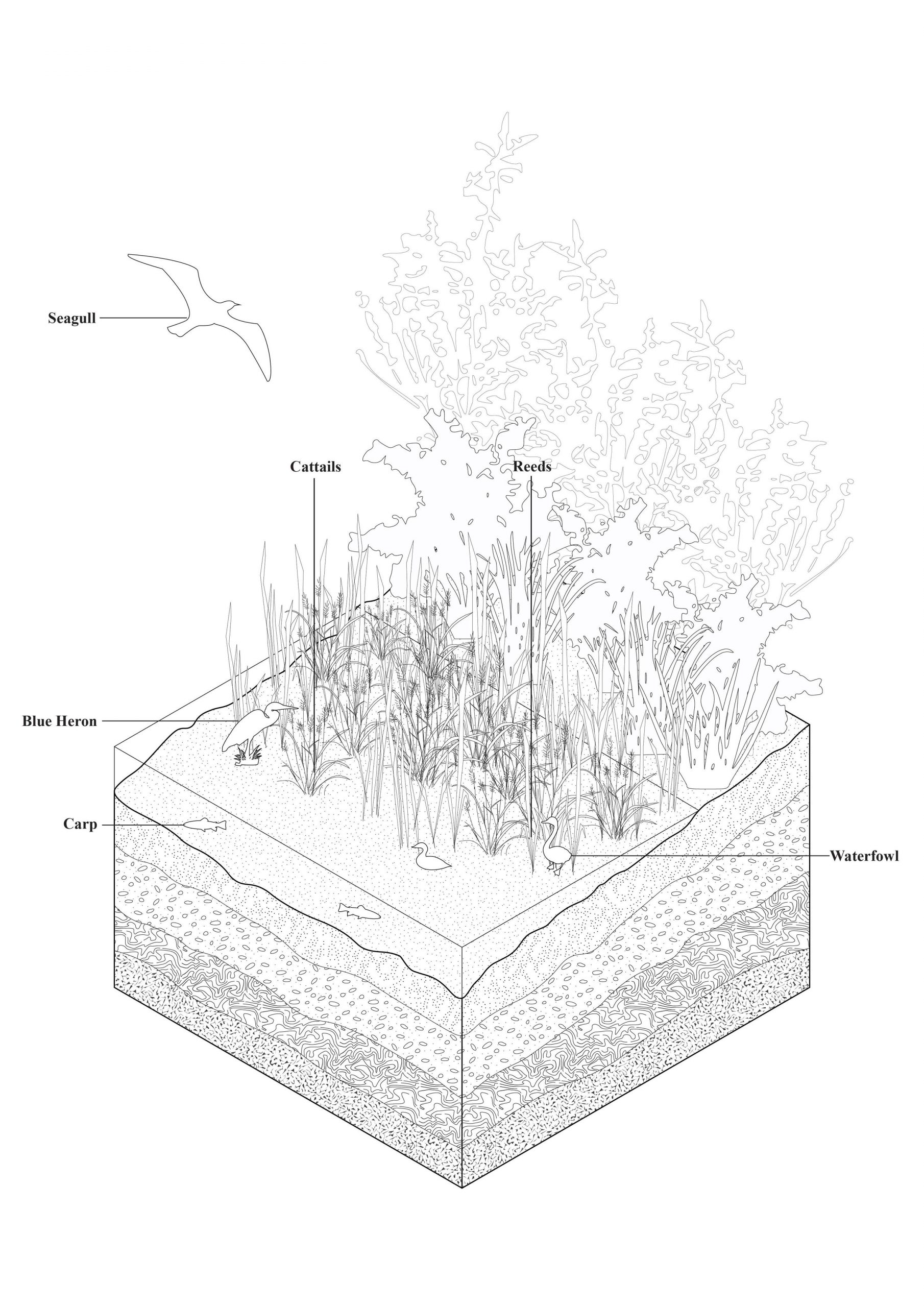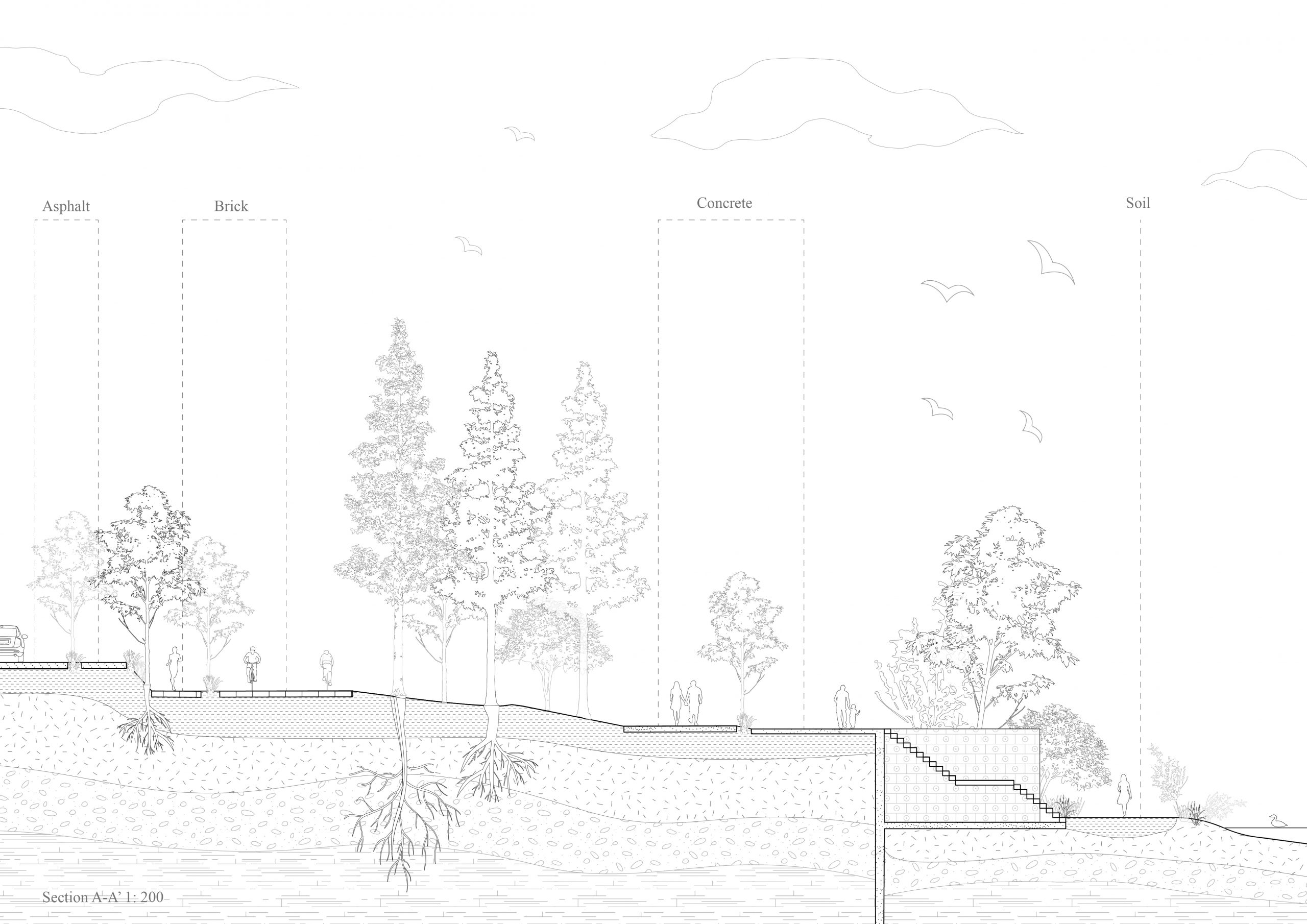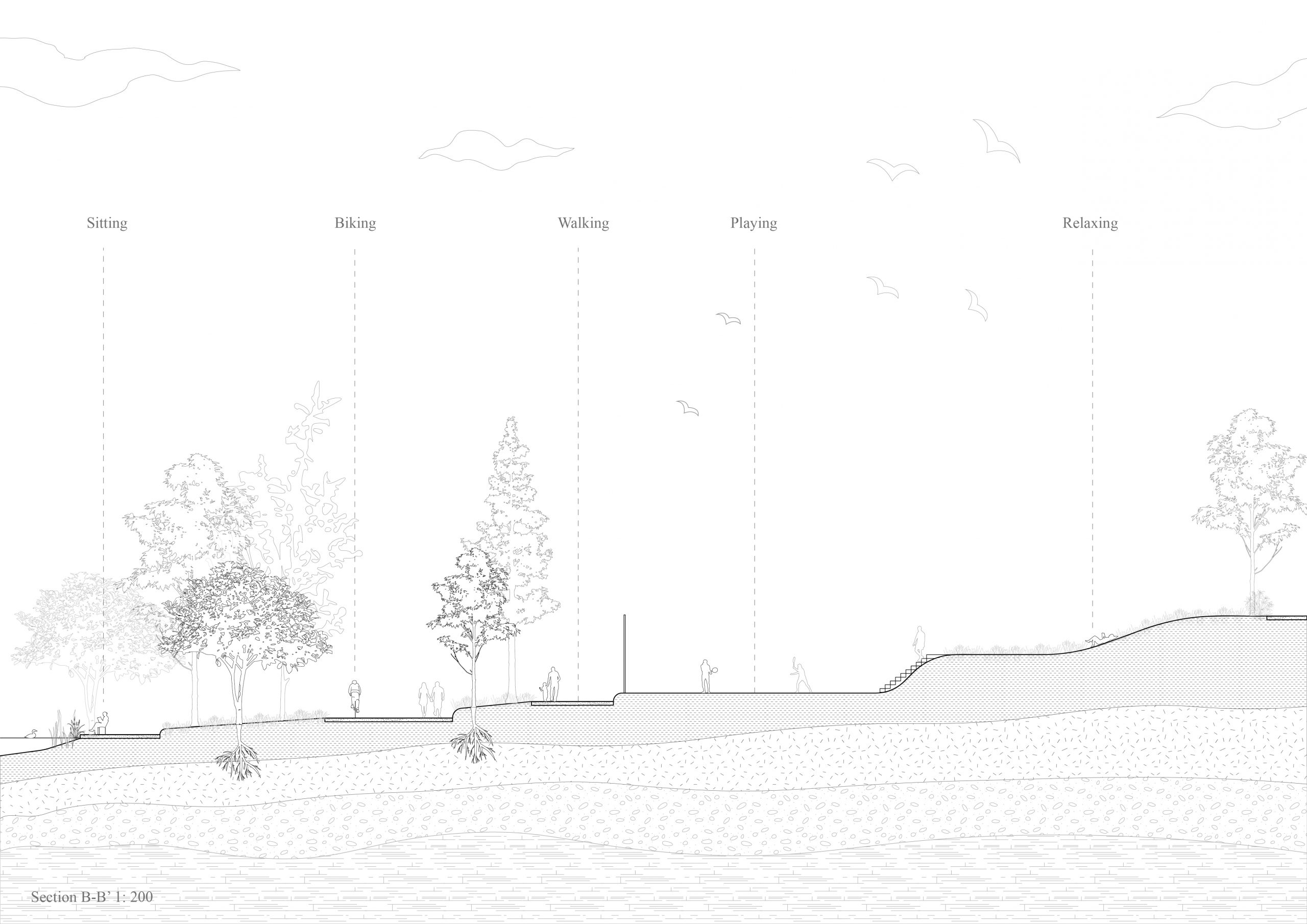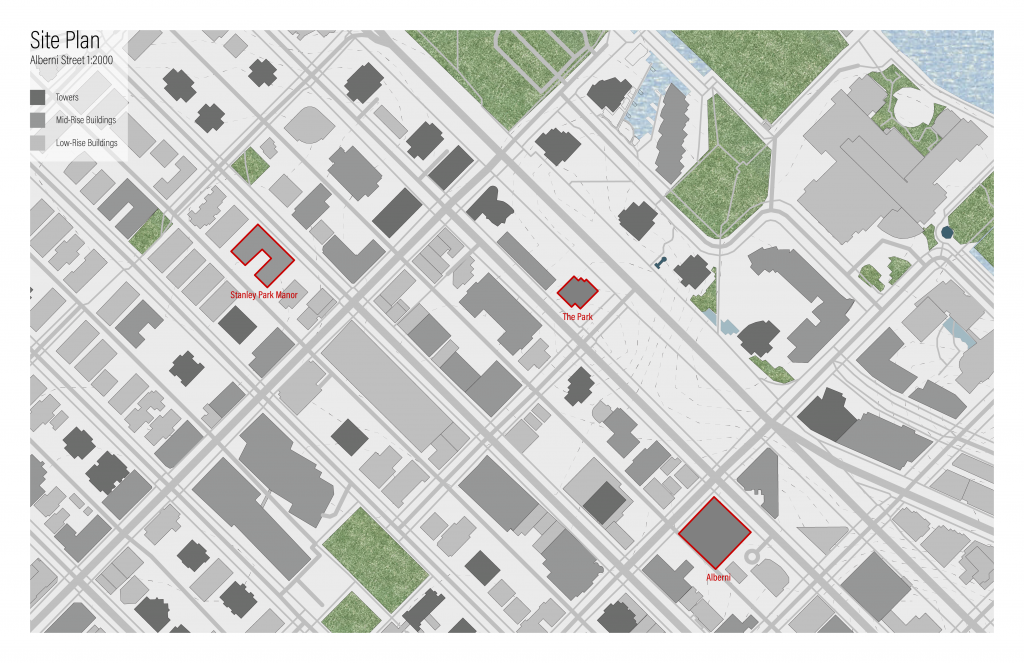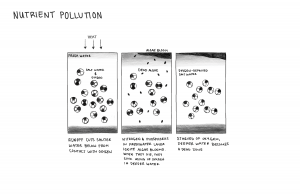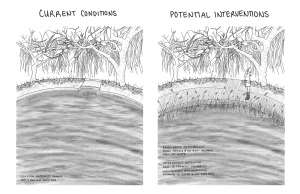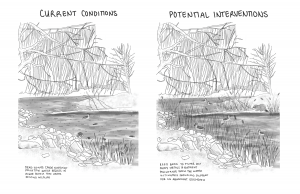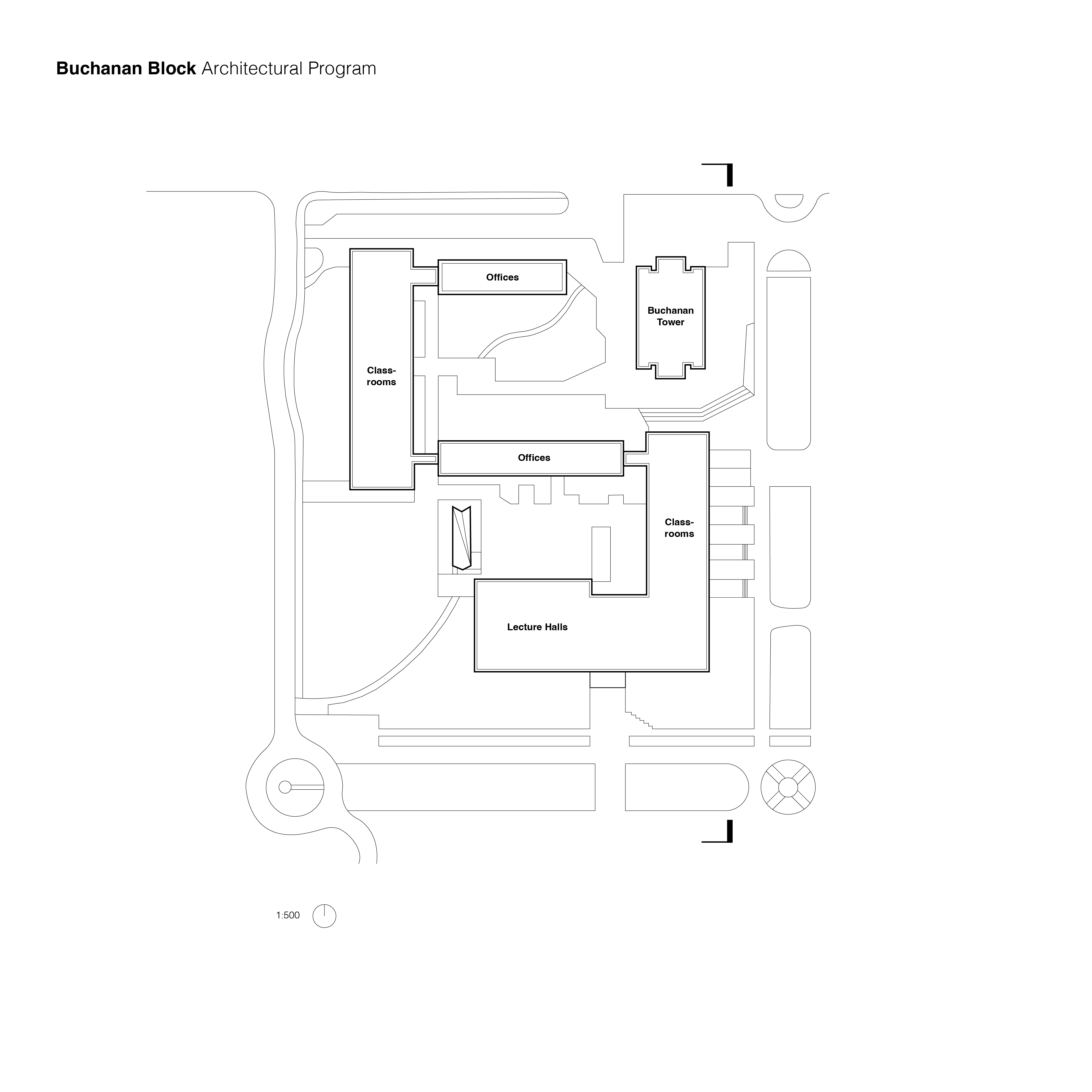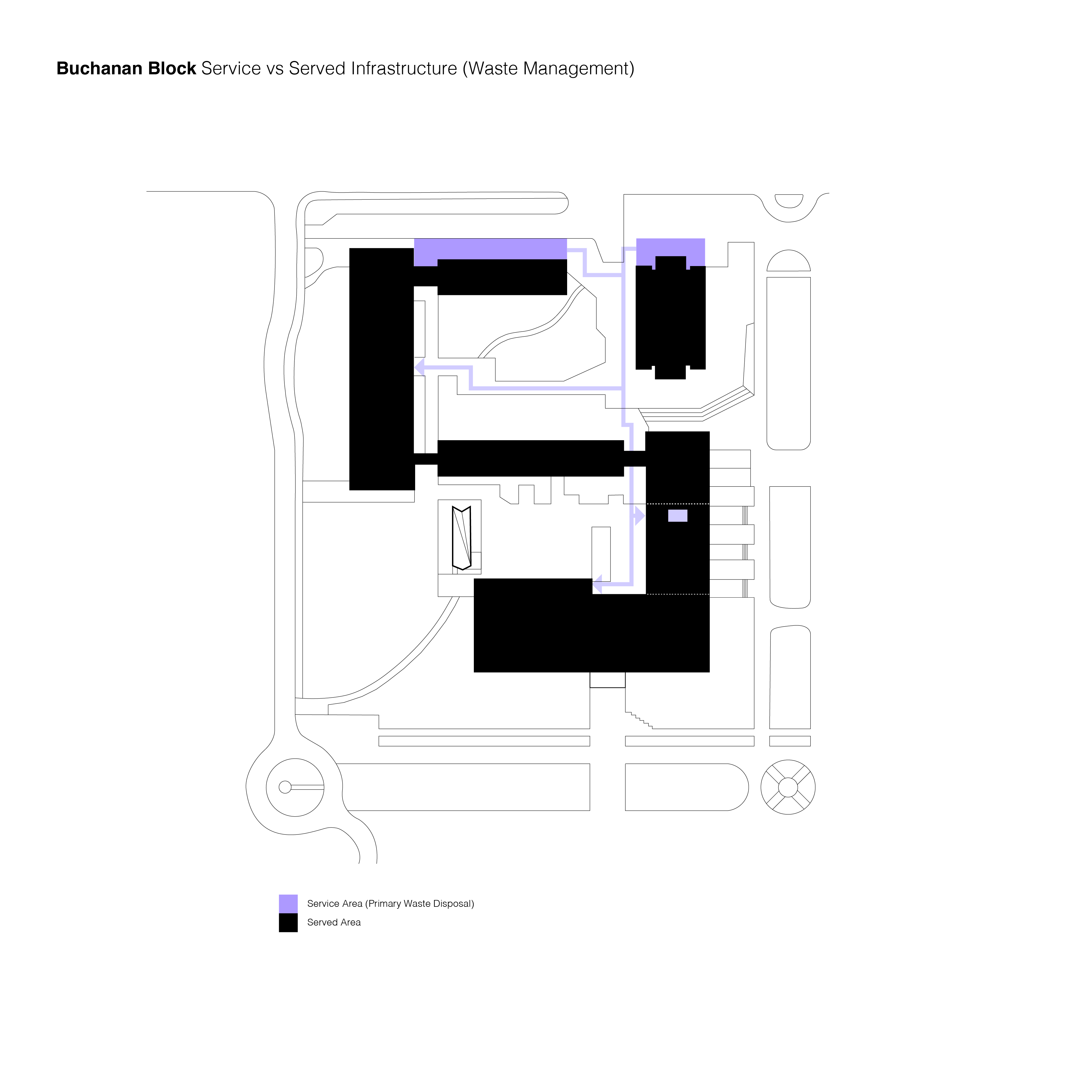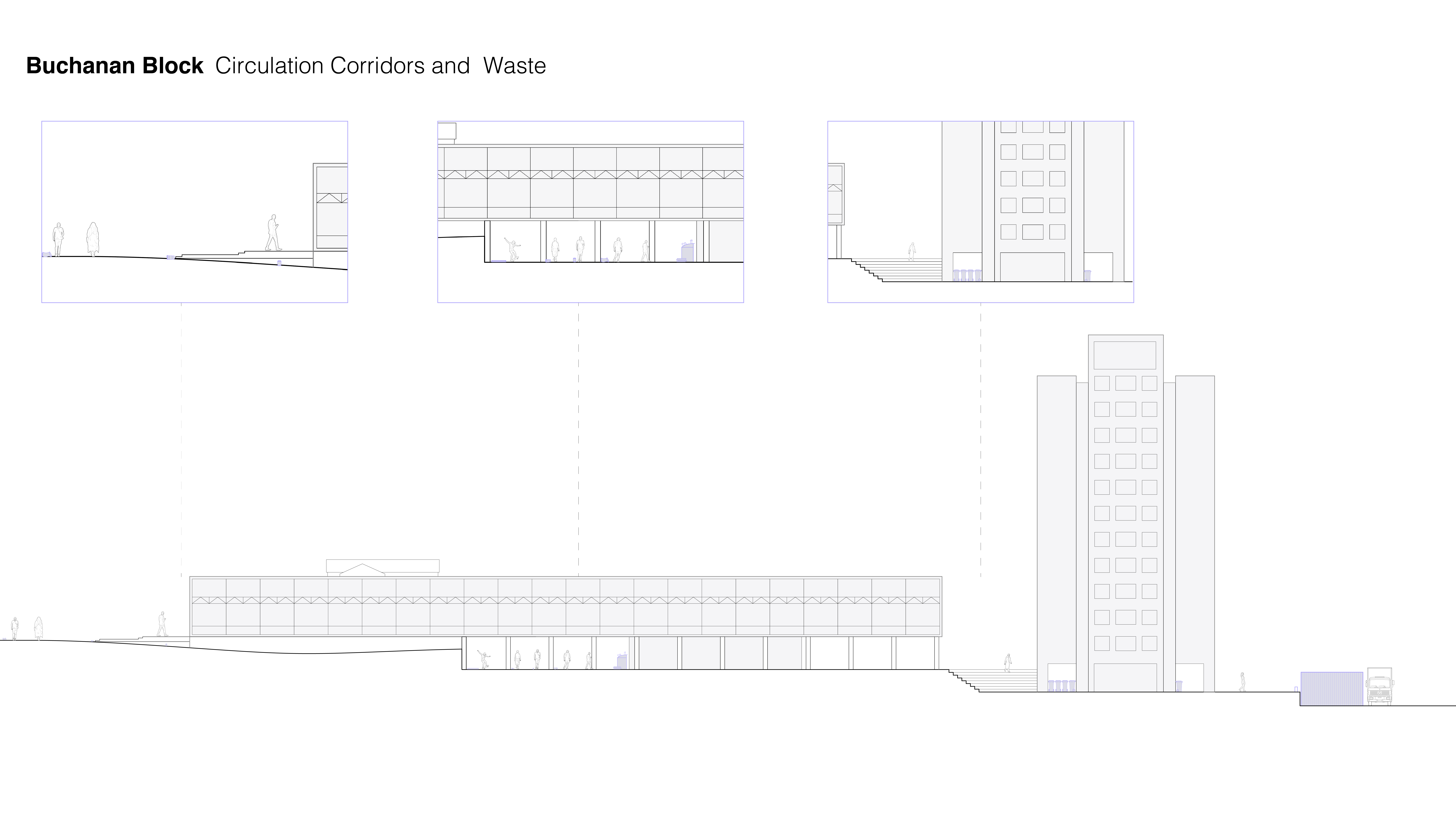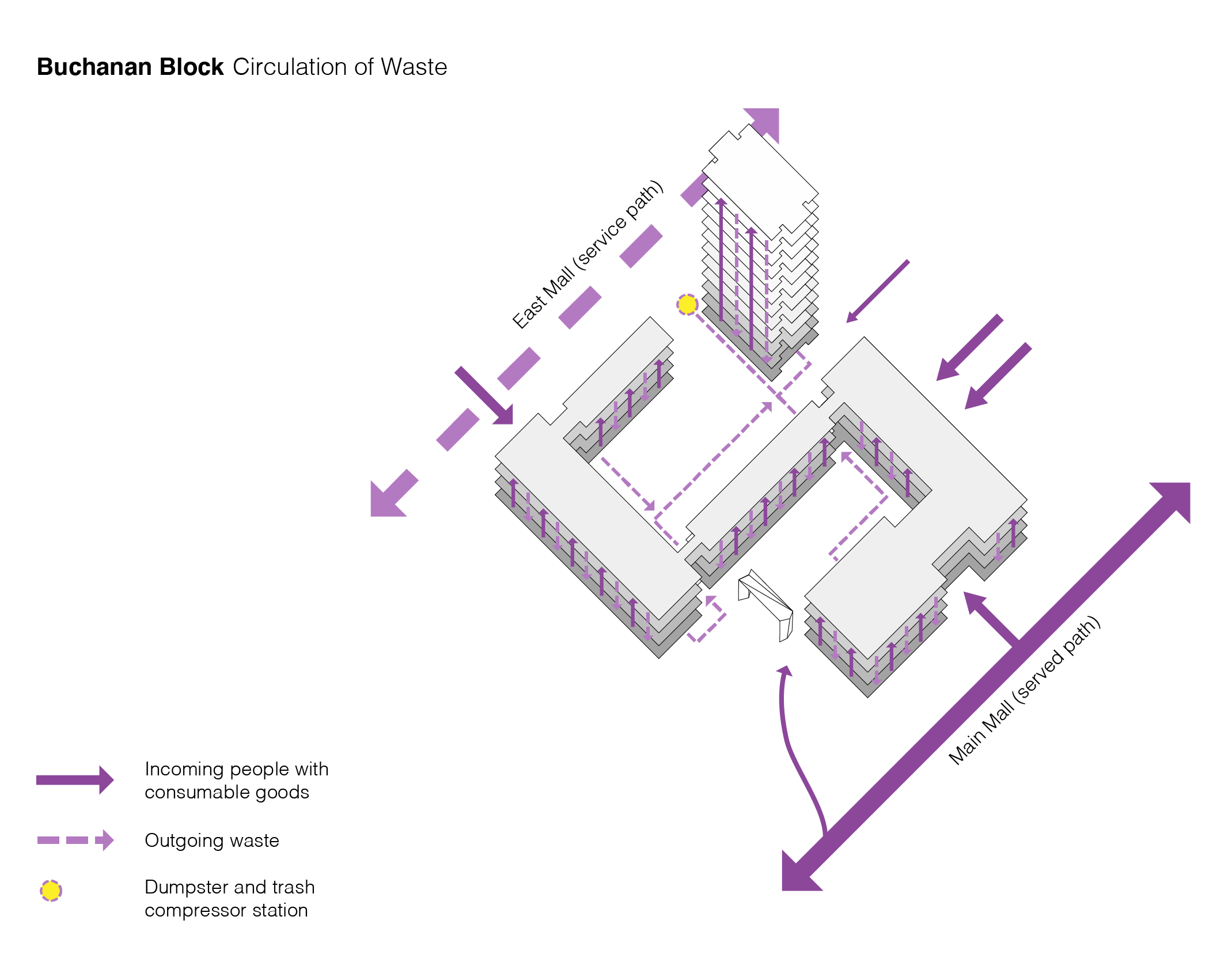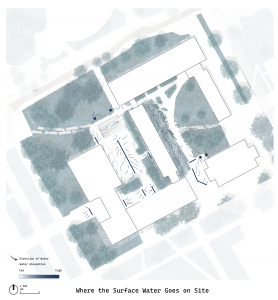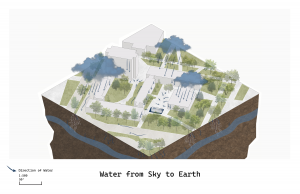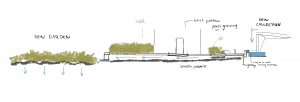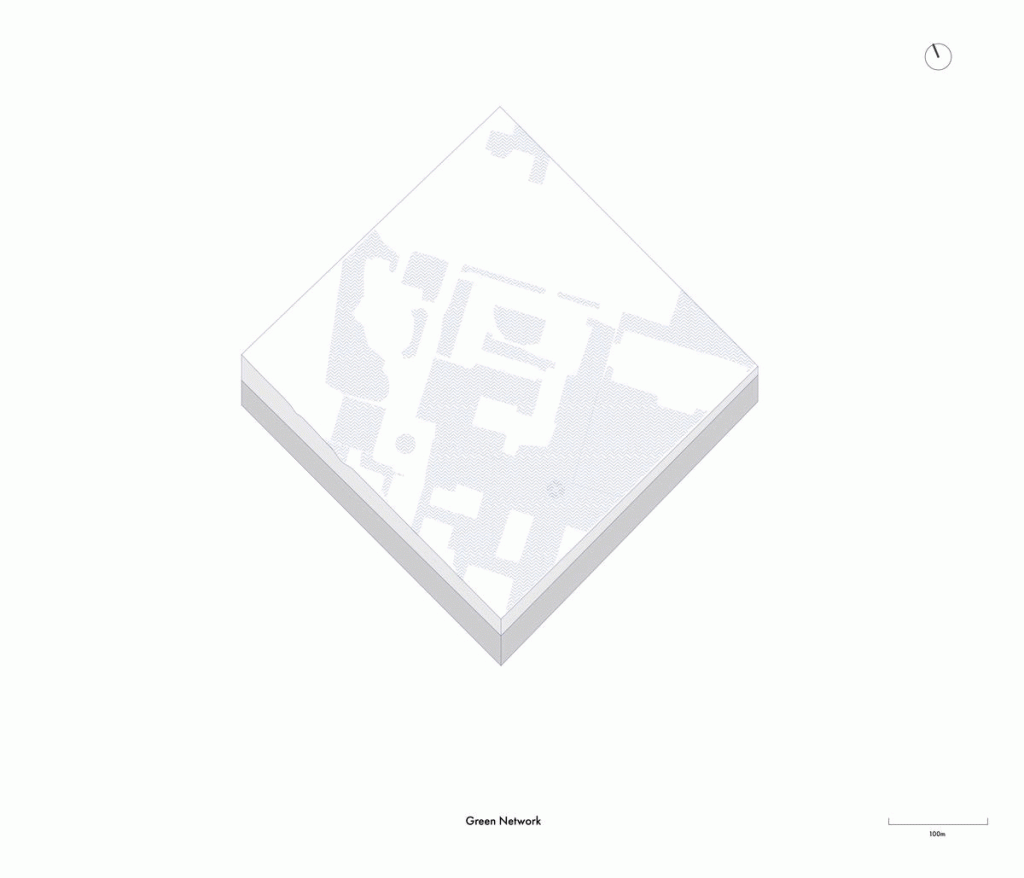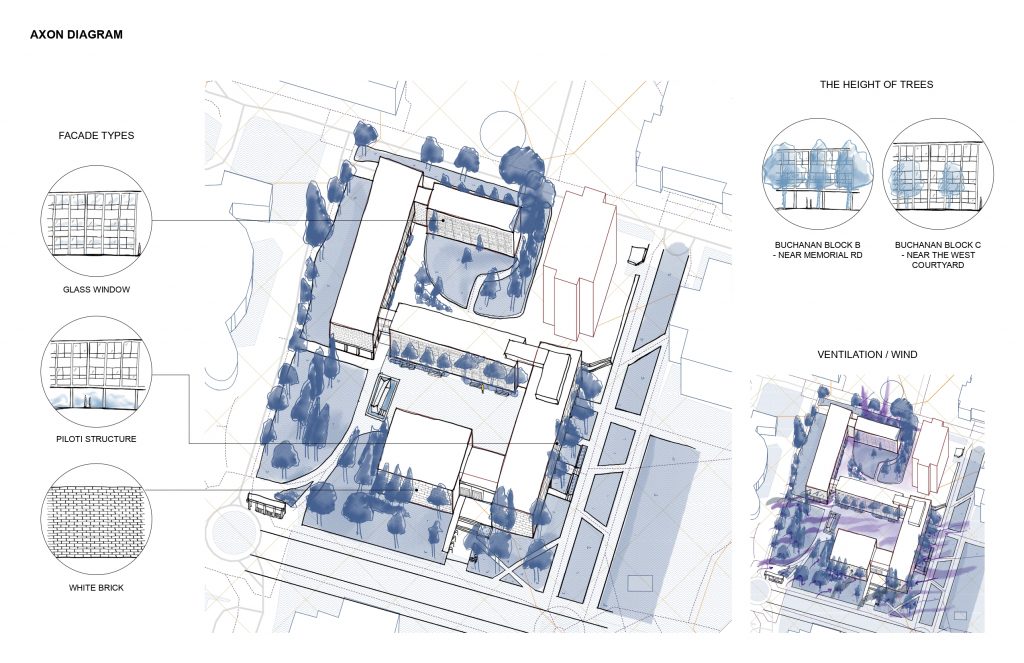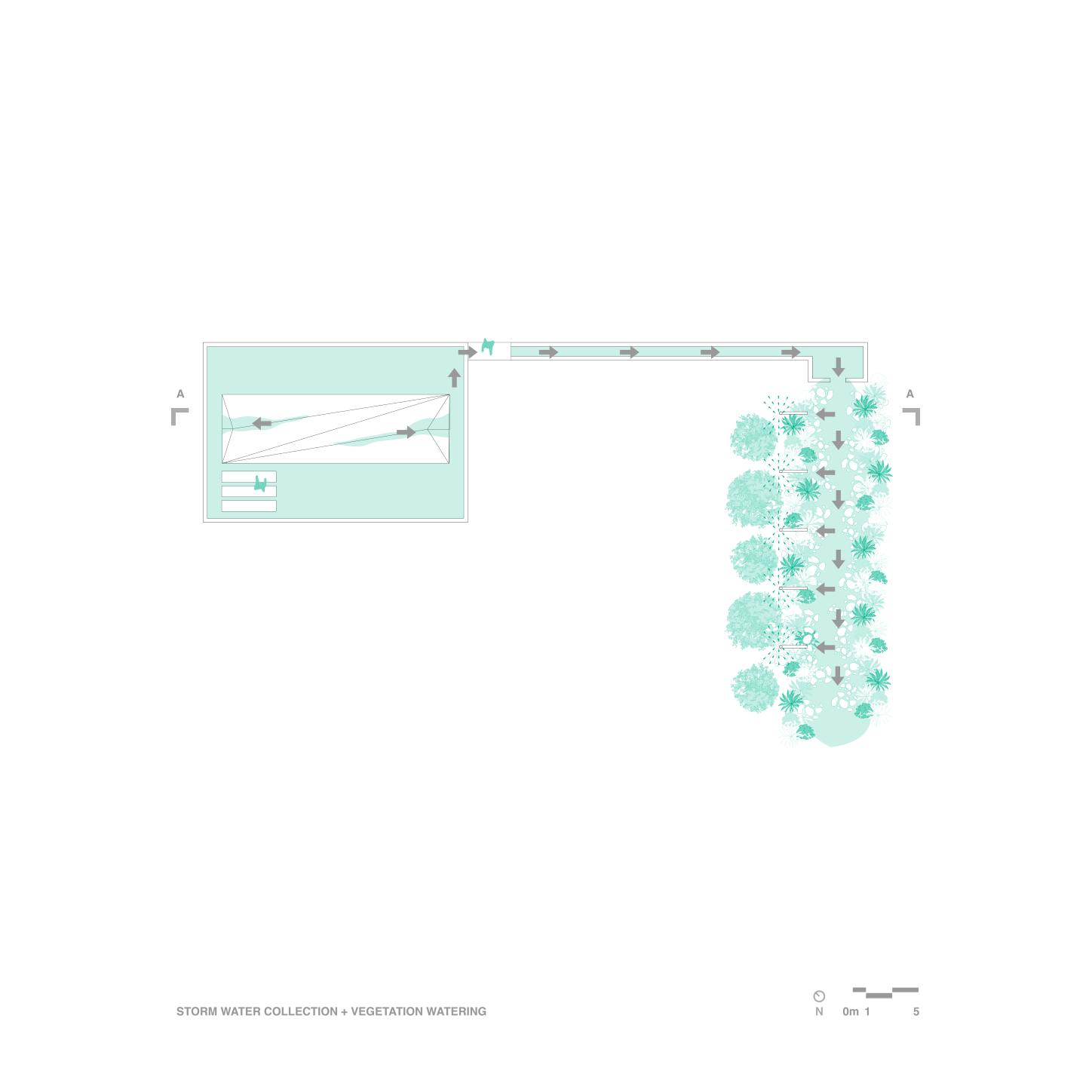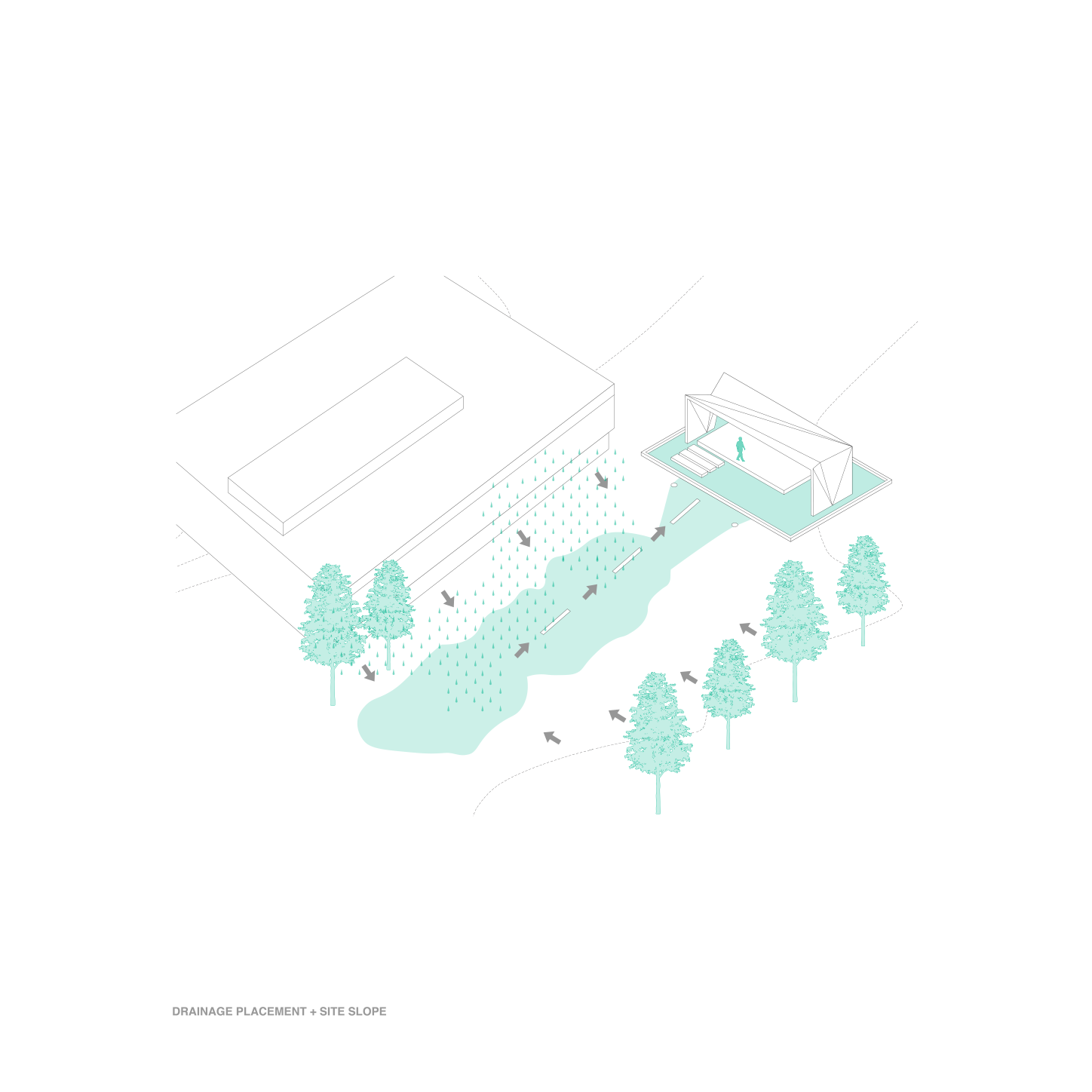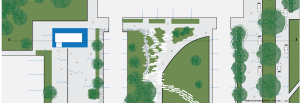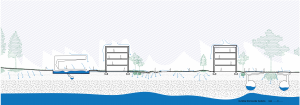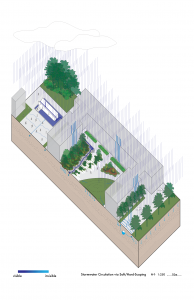Acknowledging the ecological damage at Lost Lagoon as result of social events, as well as the ecological activism to repair these damages, encourages the need to not only design for ecological repair, but for the repair of ecological and social relationships. In this way, human visitors can acknowledge the histories present at Lost Lagoon and actively move forward simultaneously with sustainable ecological futures.

Lost Lagoon Timeline: An exploration of the history of Lost Lagoon shows the relationship of the social and ecological events of the site. It can be used as a tool to see correlations (or missed correlations) between social and ecological events, to examine patterns of this relationship, and to speculate the future relationship of social and ecological features at Lost Lagoon.
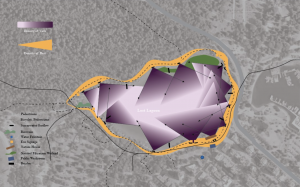
View Cones and Places of Rest: Analyzing the density of views and density of rest to understand the characteristics of spots along the Lost Lagoon trail where places of viewing the lagoon and resting overlap.
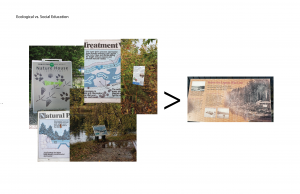
Ecological vs. Social Education at Lost Lagoon: Most educational stops are displayed by signs and ecologically focused education is more present than socially focused education. There is an opportunity to design education that integrates both ecological and social aspects of Lost Lagoon.

Relationship between Social (Human) and Ecological (Lost Lagoon): The evolution and predicted evolution of the relationship between humans and Lost Lagoon calls for reparation toward a more reciprocal relationship.
Designing a Socioecological Boardwalk across Lost Lagoon: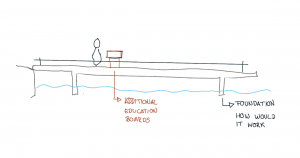
sketch ideas of educational boardwalk: How can we engage people with the social educational aspects of Lost Lagoon? What methods can we explore to share this information? How will the boardwalk engage with the Lagoon?

Map of Proposed Boardwalk: The boardwalk starts by the Nature House south east of Lost Lagoon and has 7 proposed stops that span northward across the Lagoon to the manmade wetland. The stops correspond to a timeline of Lost Lagoon and act as social education spots of these events.

Section at Fountain: The paths mid point meets at the old fountain, at the centre of the existing trails view and a symbol of the human-centric relationship we have had with the lagoon for the last century, prioritizing our views over the lagoons health. Now, it holds a timeline of the constructions on the lagoon paired with the ecological effects they had, up to this present path, creating a deeper connection for the visitor and the lagoons shared history.

South Entrance of Boardwalk Perspective: Experiential view of the educational stops south of the fountain, including the Lost Lagoon poem engraved onto the deck to acknowledge Indigenous histories along the Lagoon, a concrete section of the platform to allude to the construction of the causeway, and the bird watching pavilion to mark the creation of the bird sanctuary around the Lost Lagoon trail.
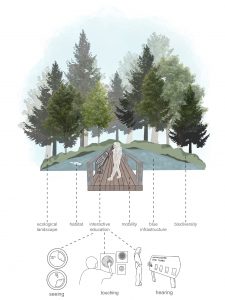
Section of Boardwalk North of the Fountain with Experiential Education: The walk over the Lost Lagoon develops a relationship between human and nature with interactive educational boards. It creates a new urban space without compromising the eco-system. The educational boards are interactive using multiple senses, creating a multi-sensory walk.


